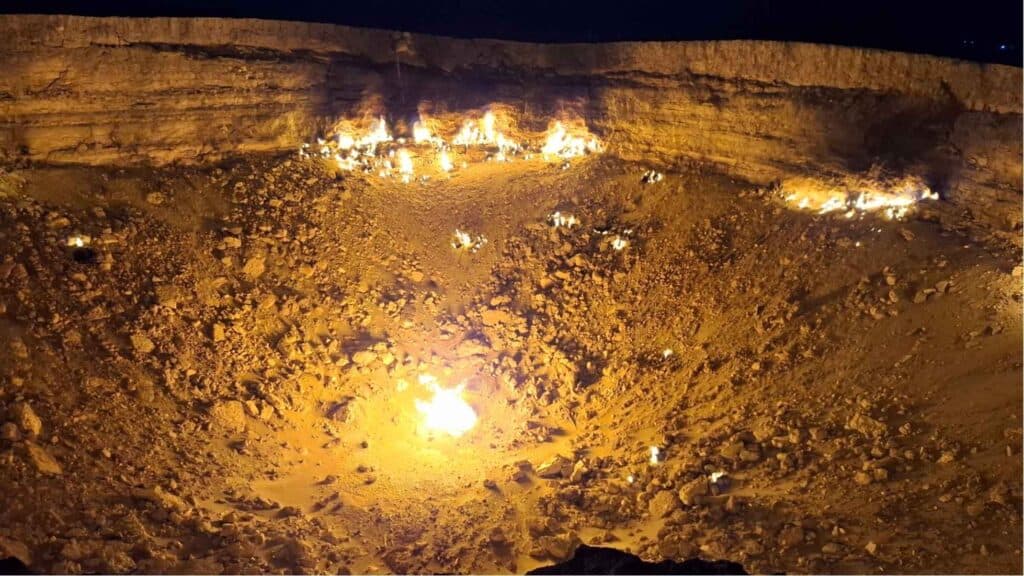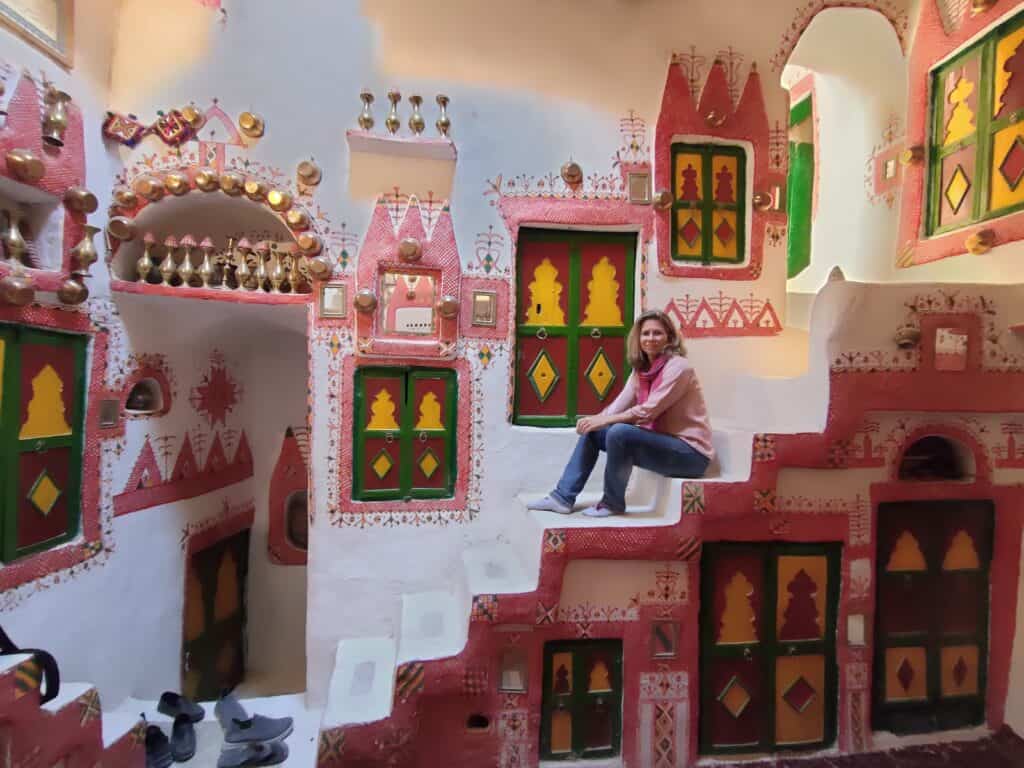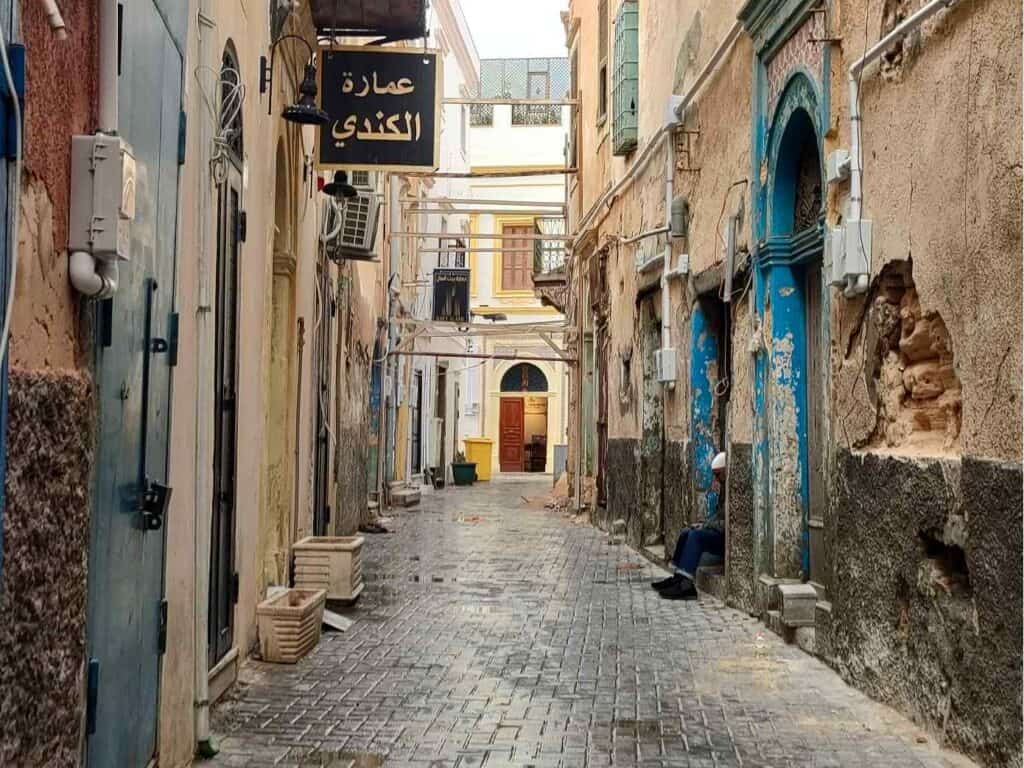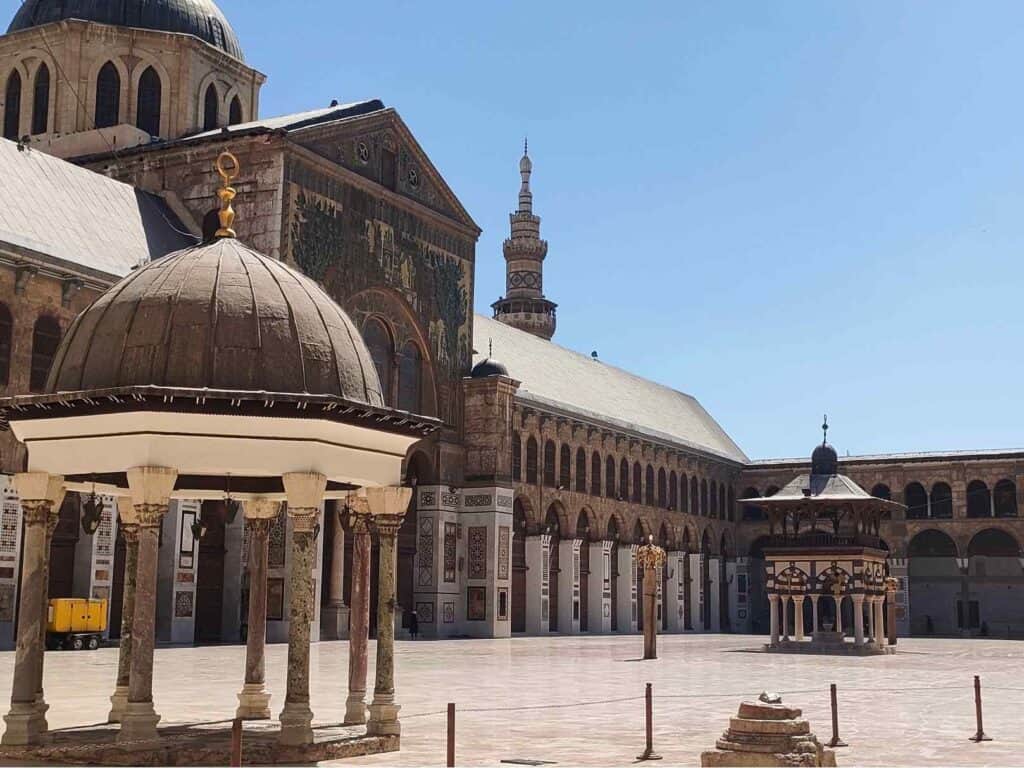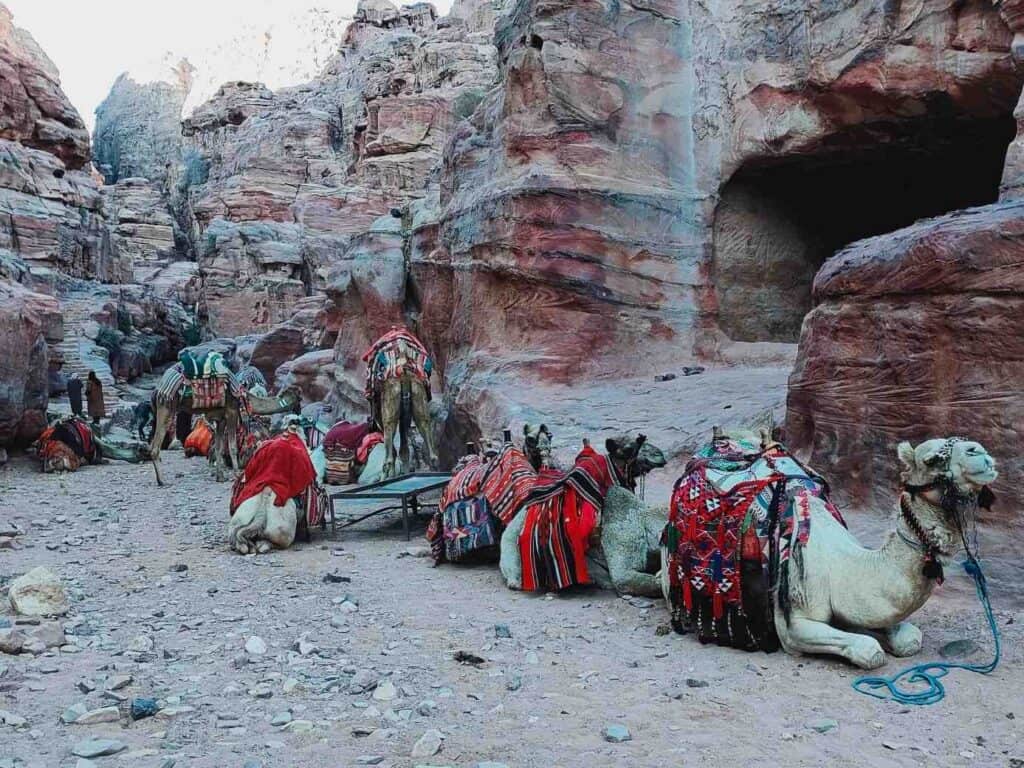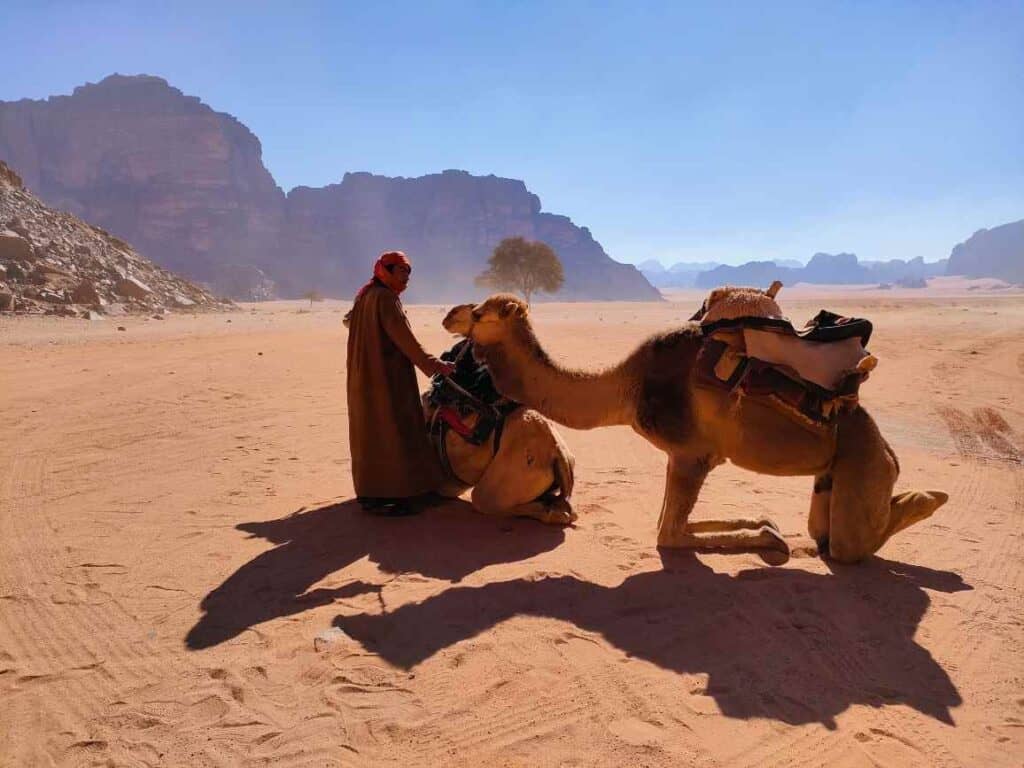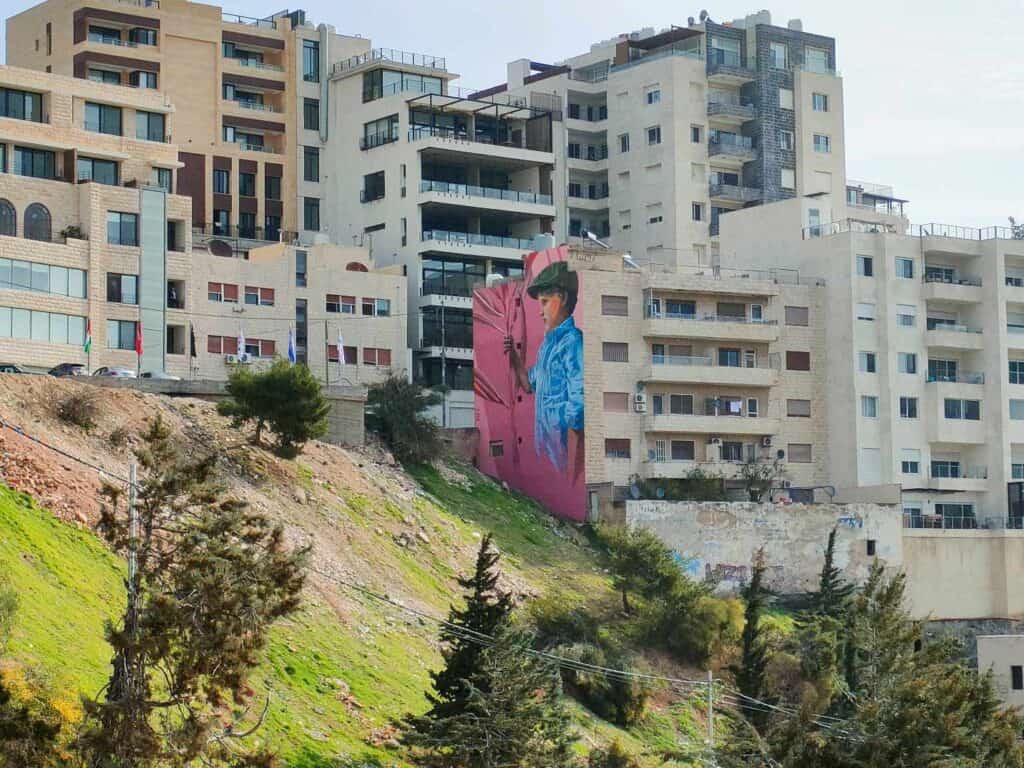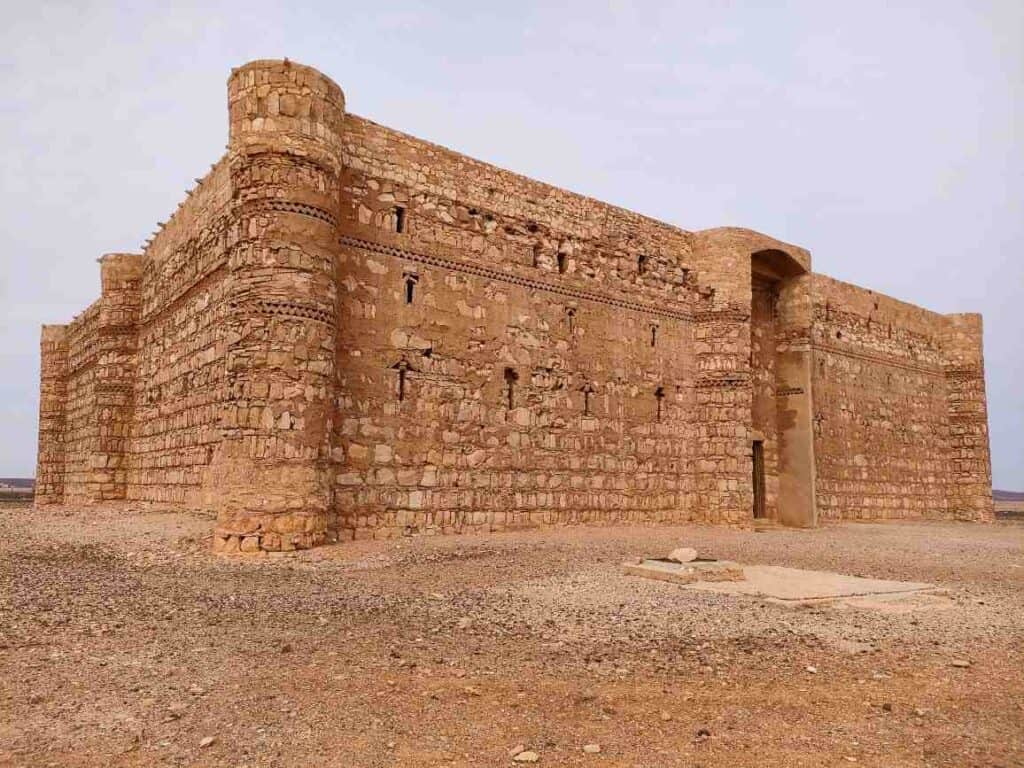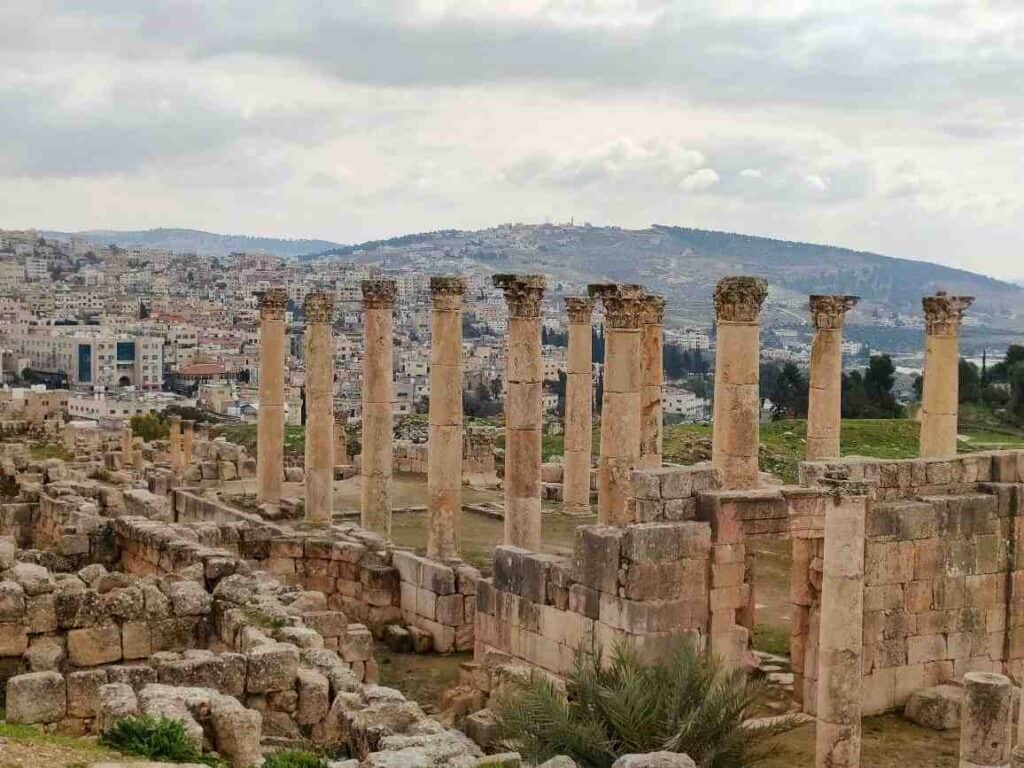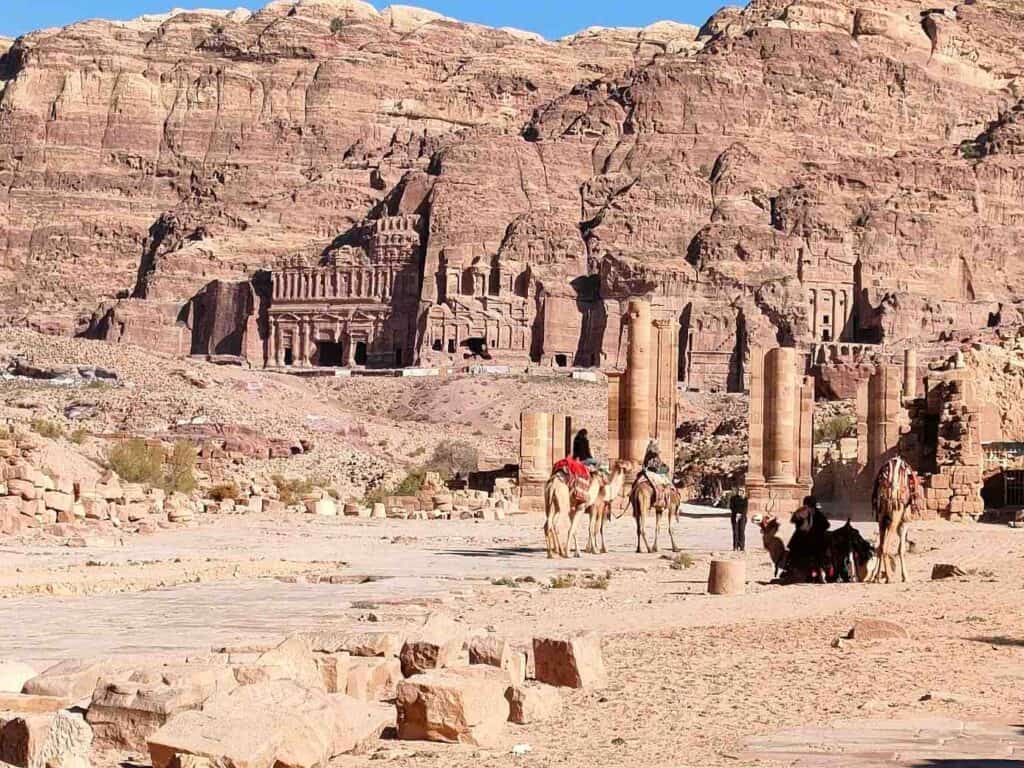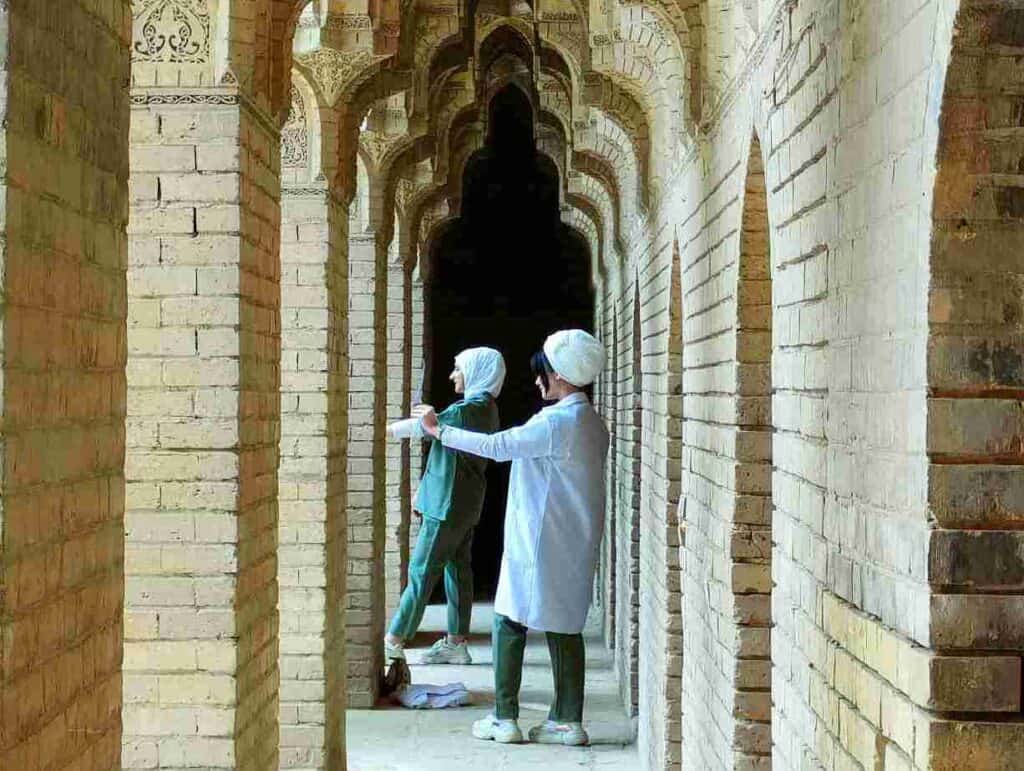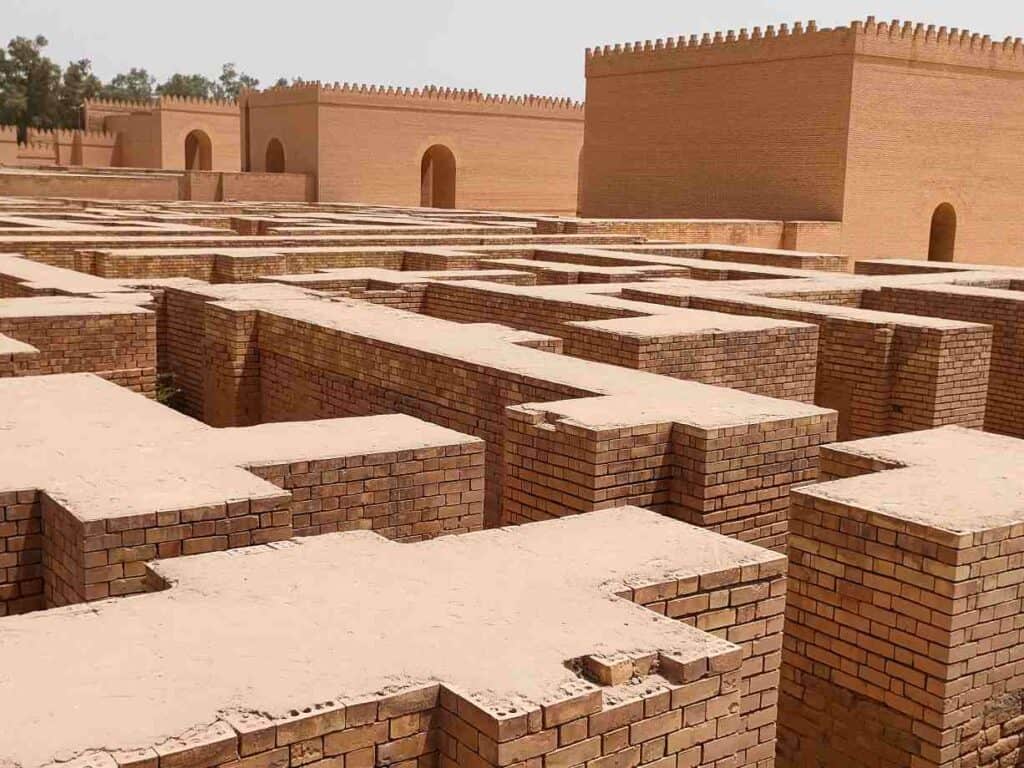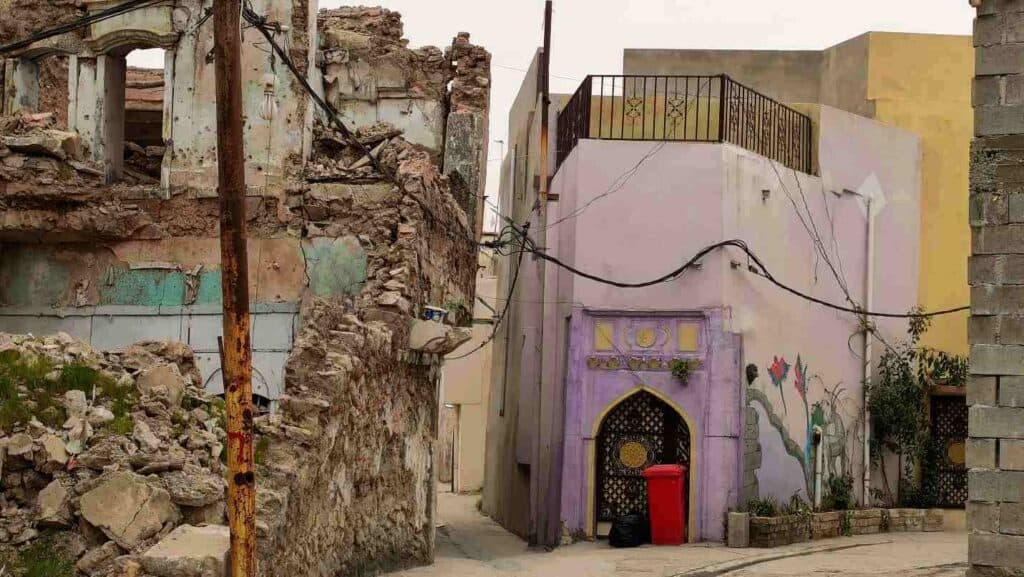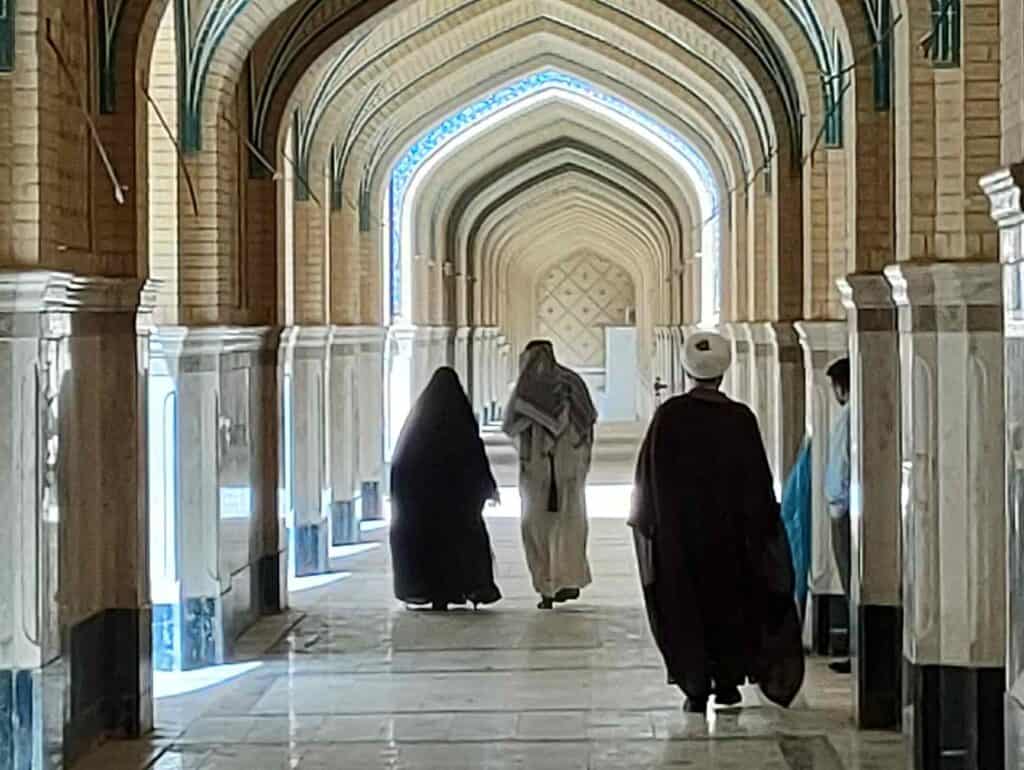Turkmenistan is one of the most unknown countries in the world, surrounded by complete mystery. Although many people associate Turkmenistan primarily with strange presidential decrees and gas craters burning non-stop for decades, it has three World Heritage Sites, including Merv, once the world’s largest city along the Silk Road. Today, the sparsely populated country, mostly covered by the Karakum desert, seems to be in the middle of nowhere, even though it was once the center of the world. Akhal Teke horses and beautiful Turkmen carpets are national treasures, and a special day is dedicated to them. Here is the world’s largest carpet and the colorful Yangykala canyon. The extensive oil and gas fields have recently enabled significant construction, completely changing the design of the capital, Ashgabat. However, the contrasts are significant. While the capital has nearly six hundred white marble buildings, the university is like a palace, and even the simple residential buildings shine in night lights, the countryside presents a completely different picture. In this travel guide, you will find out the best things to visit in Turkmenistan.
All you need to know before visiting Turkmenistan
- Ashgabat: the capital of Turkmenistan
- What to visit in Ashgabat
- Around Ashgabat
- Kow Ata lake
- Merv, UNESCO World Heritage
- Nokhur village
- Anau – on the way to Mary
- Darvaza, the "Door to Hell" or "Gates of Hell"
- Yangykala canyon
- Konye Urgench- UNESCO World Heritage
- Dinosaur Plateau
- Turkmenbashi
- Awaza, the Caspian Sea Resort – not open for tourists (2024)
- Posts about the Middle East
Ashgabat: the capital of Turkmenistan
Ashgabat is probably the most peculiar capital in the world. It is registered in the Guinness World Records book as having the highest density of white marble buildings; almost 600 such buildings were built after 2000. Incredibly, none of that existed before. The city hosted the Asian Indoor and Martial Arts Games in 2017, which led to a massive building program, including a monorail and an Olympic complex. However, it has never hosted the Olympic Games.
It is a relatively new city founded by the Russians in 1881. Sadly, a tragic earthquake measuring 7.1 on the Richter scale almost flattened it to the ground in 1948. It is estimated that two-thirds of the population, 70,000-100,000 people, died in and around Ashgabat, including the mother and two brothers of the first president, Niyazov, according to the Ruhnama (“the Book of the Soul” written by him serving as part of the national curriculum). Niyazov sat alone by his ruined home for six days, weeping, before his family was pulled from the wreckage and buried.
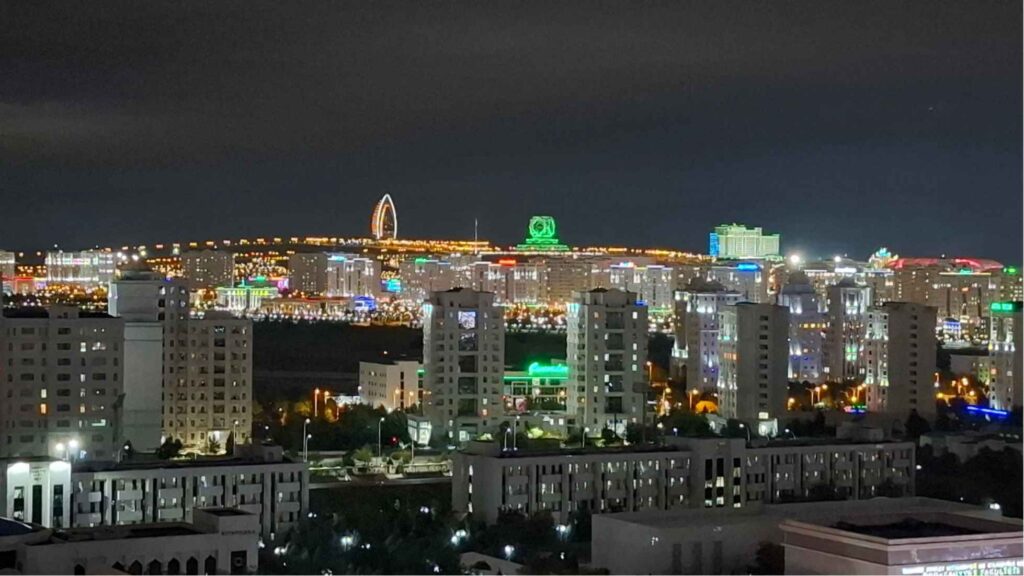
Many people came to help in the recovery from the former USSR and later stayed, contributing to the ethnic diversity. There were plans to rebuild the capital somewhere else, but finally, it was reconstructed on the rubble.
Ashgabat is intended to be the city showcased to the world and a source of national pride, so most of the buildings that survived the earthquake dating back to the Soviet period were demolished. They had no place in the future modern city that, with its stunning illumination at night, easily surpasses Dubai. The Lenin statue is an exemption. Due to its colorful ceramic decoration and because it miraculously survived, it stands today in “old Ashgabat,” where most people live. This is the place to observe local life in Ashgabat. These suburbs were once villages attached to the capital, where locals still prefer or can afford to live. In contrast, the central multilane highways in the modern part seem empty, with strikingly few cars for the size of a city of 1 million; most are old Soviet Ladas and brand-new Toyota sedans.
Here, all new government buildings were built from white marble imported from Italy, and even the size of the tiles was specified (80cm long, 40cm wide, and 3cm thick). The old buildings were also coated with white marble to align with the new design. Thus, in the middle of the desert, a district of white marble buildings was constructed with mainly government buildings, ministries, universities, public monuments, tourist attractions, hotels, and residential buildings for the government workers that they get free for their services. There is even a puppet theatre and Turkmen “Disneyland” for children. Though photos of government buildings are strictly prohibited, the Presidential Palace and Parliament buildings are a particularly impressive combination of marble and gold.
Ashgabat has been featured in the Guinness World Record book a couple of times:
It is the city with the construction of the biggest number of fountains in a public place, having the largest indoor Ferris wheel and the largest artificially constructed star-shaped building (the TV tower). And there is probably more to come.

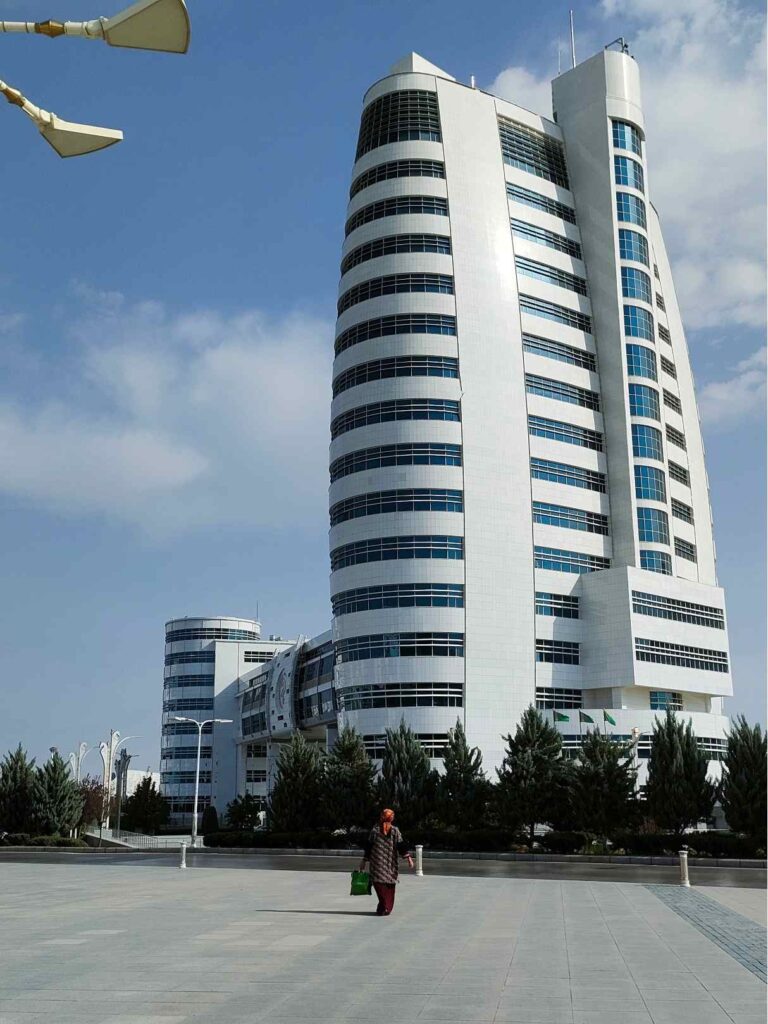
Thanks to the large number of parks, depending on heavy irrigation, Ashgabat is quite green and the Kopet Dag mountain range between Iran and Turkmenistan provides a spectacular backdrop to the city.
You can combine your trip to Turkmenistan with visiting Iran. Here you find all my posts about Iran
Ashgabat is as clean as no other city in the world, even cleaner than Singapore, that is well-known for that. Even cars must be clean to enter the capital, so car-washing facilities are found along the major routes leading to the capital.

The stunning illumination at night and the airconditioned bus stops all around Ashgabat show that there is no concern about electricity shortage. It is cheap, plus vital, as Turkmenistan is the hottest of all Central Asian countries, and temperature can quickly rise to above 40 degrees during the summer months.
Ashgabat has plenty of monuments, some registered among the Guinness records, that you can easily visit without crowds as the country has only around 14,000 tourists a year. They put the indoor Ferris wheel into motion only for our sake…
What to visit in Ashgabat
The Airport of Ashgabat
The only international airport in Turkmenistan is one of the most modern in the world. The domestic terminal is even more impressive compared to the international one. The airport was completed in September 2016 as part of the large-scale construction in preparation for the Asian Indoor and Martial Arts Games 2017. The supermodern airport building, primarily made with white marble is shaped like a falcon. Its capacity is 17 million passengers, making it the largest in Central Asia.
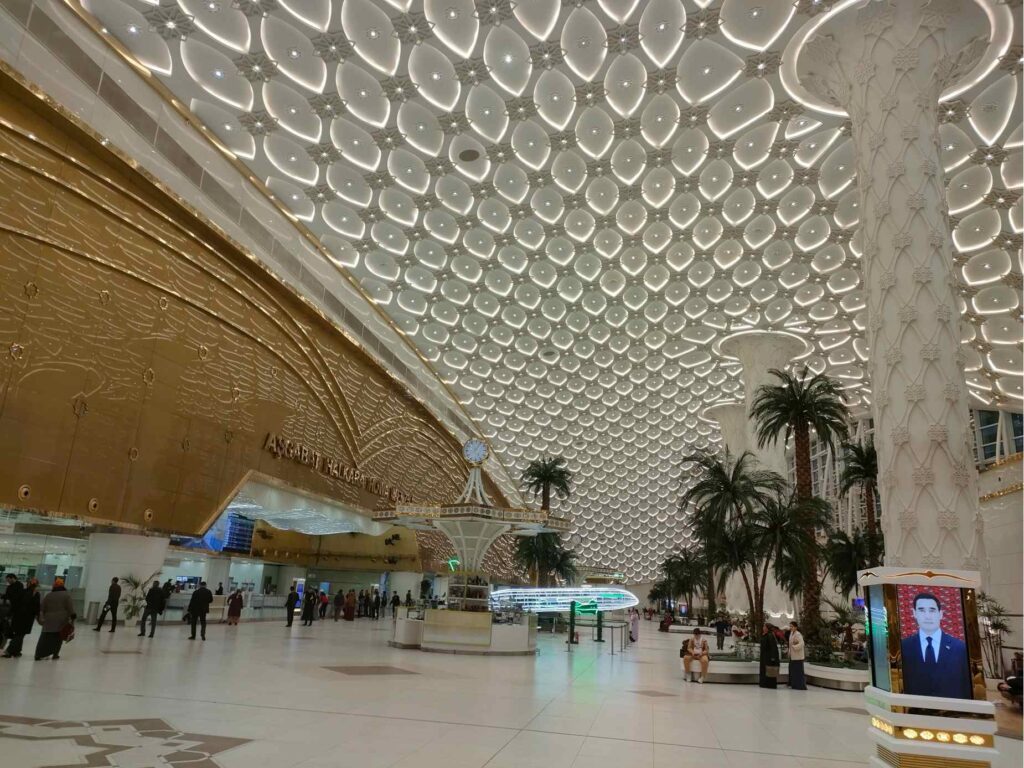
Yildiz, the Burj Al-Arab of Ashgabat
Standing on top of a small hill, this building resembles the Burj-al Arab Hotel in Dubai in its sail design. It is no coincidence. This is the top hotel in Ashgabat, with all the luxury you can imagine, from a large pool to a golf course. There is even a monument in a similar shape commemorating the construction of this luxurious hotel that shows the actual temperature of Ashgabat.
Bagt Kosgi Wedding Palace
This unique building, in the shape of a dice, with each side having an eight-pointed star, is where young couples officially get married. The cube incorporates the “planet Earth” depicting Turkmenistan. The 11-story building offers all kinds of services necessary for weddings: event halls, car rentals, shops selling wedding dresses, decorations, and jewelry, a photo studio, a beauty salon, and even a hotel with 22 rooms. Thanks to its location on a hill its characteristic illumination, it is seen from far away, even from the plane while landing in Ashgabat.
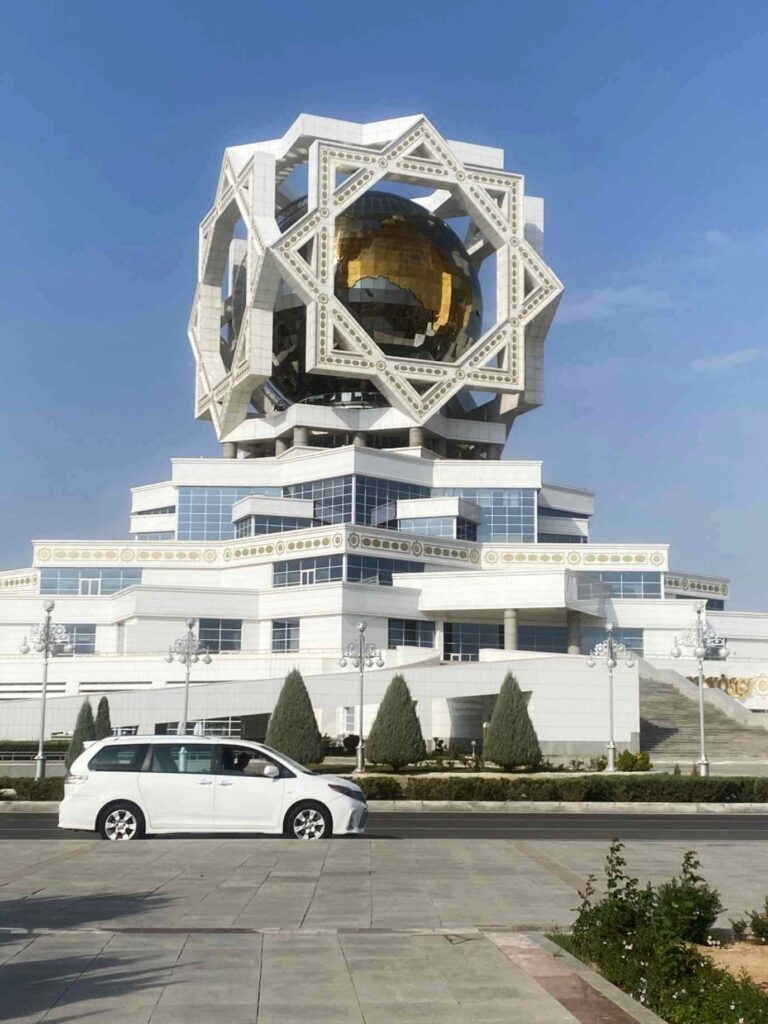
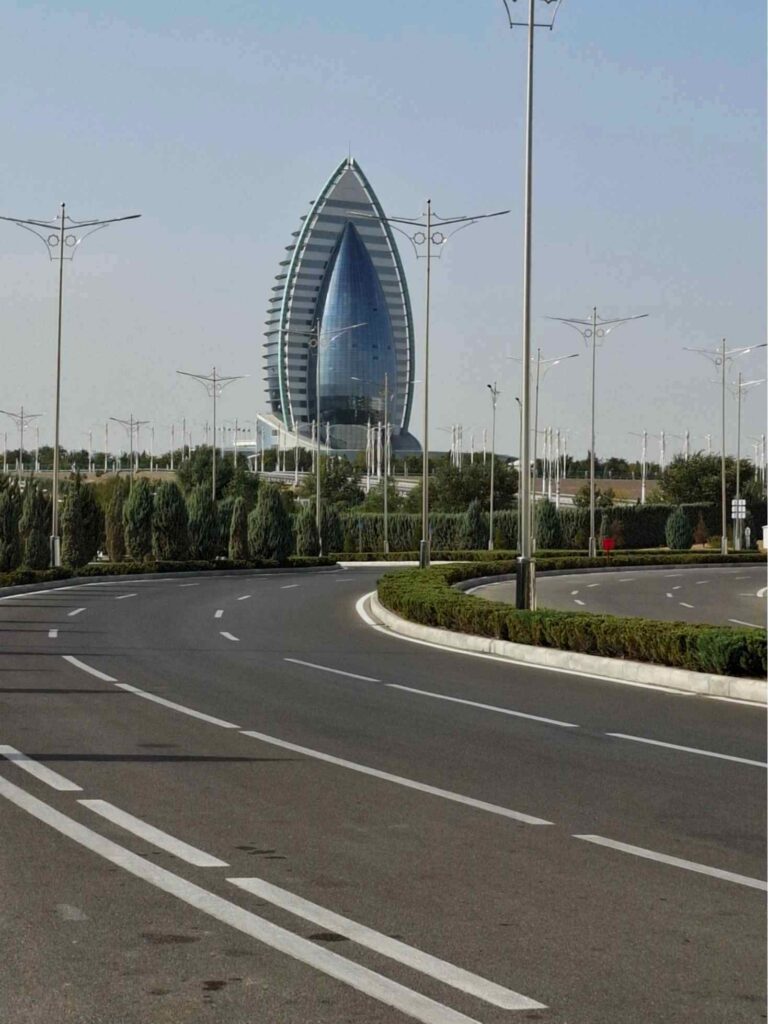
The Monument of Neutrality
This monument commemorates the United Nations General Assembly Resolution of 12th December 1995, when Turkmenistan was officially declared a neutral country. On top stands the over 10-meter-high statue of the former President, with his arms starched out as a gesture of welcome. Niyazov was once revolving towards the sun. However, it was relocated and no longer occupies a central place in Ashgabat. The revolving mechanism was also removed.
The monument has a unique shape resting on 3 “legs”, intended to symbolize the trivet on which a Turkmen cooking pot traditionally sits.


Russian bazaar
Despite the growing number of shopping malls, markets are still a popular place for shopping and the Russian bazaar is one of the largest and oldest in Turkmenistan. Located in “old Ashgabat,” it is the best place to buy some cheaper souvenirs, from the Turkmen flag to the English version of Ruhnama, honey, spices, vodka, beer, seasonal fruits, and caviar, or to watch local people going on their daily lives. It was designed by Russian architect Vladimir Visotin in a Soviet modernist style and decorated by Turkmen sculptor Klych Yarmamedov.
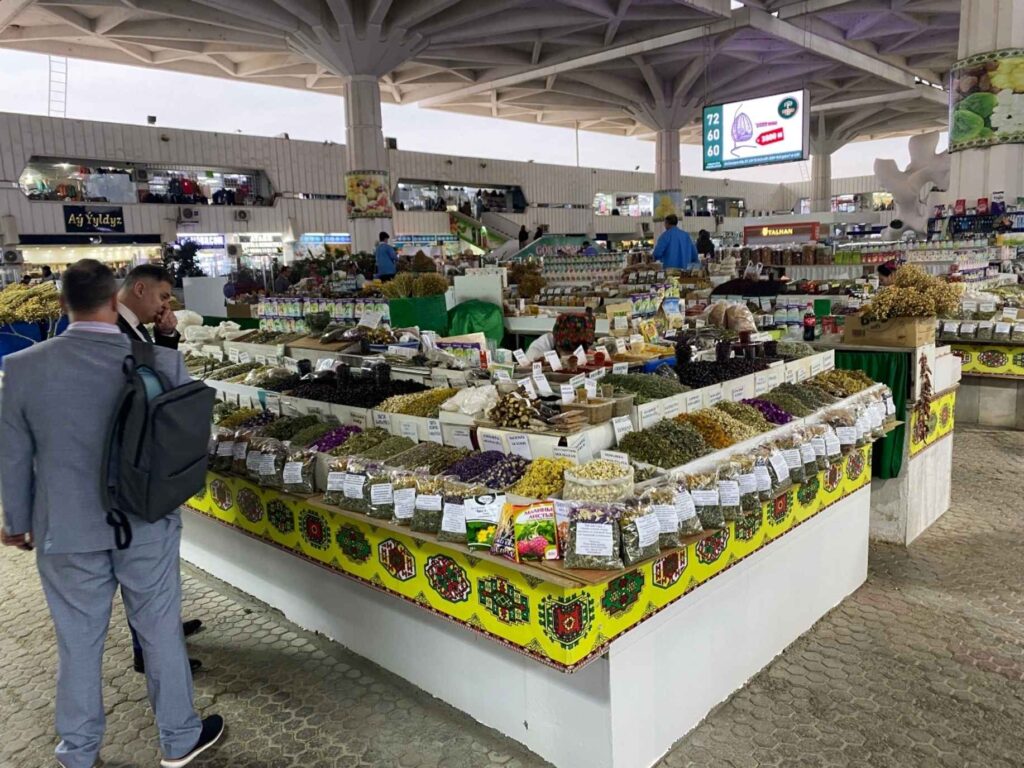
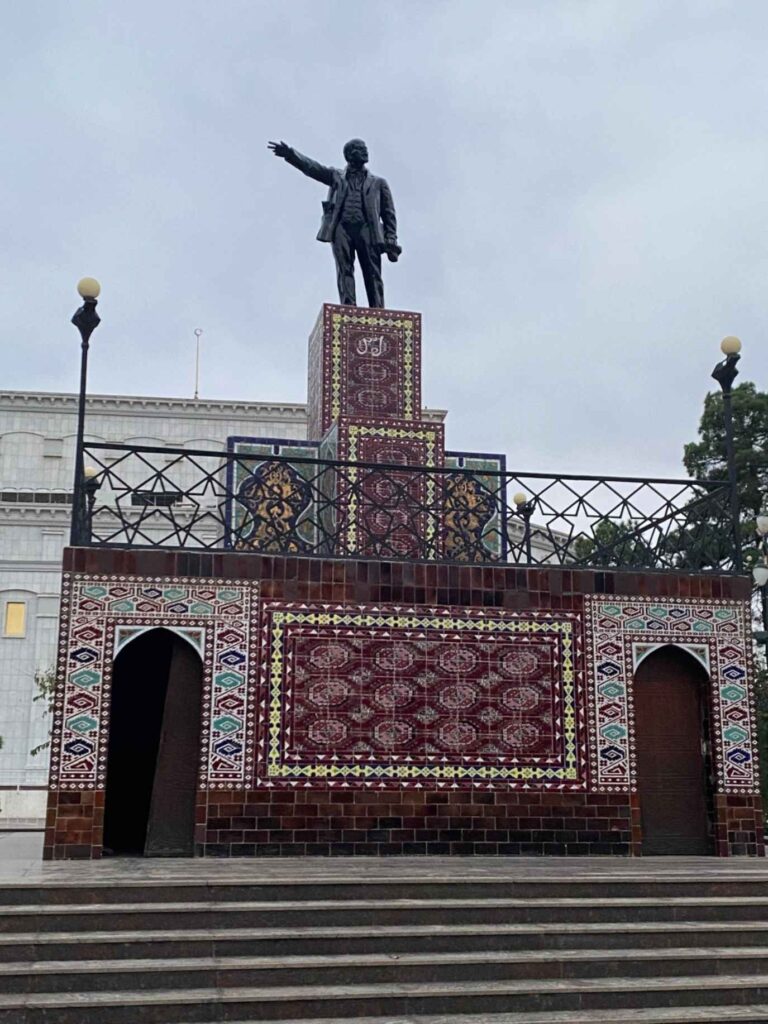
Berkerar Shopping Mall
This is probably the fanciest shopping mall in the capital, with several shops of various brands on multiple floors. The inner design with changing colors and the giant statues, make it worth strolling around.
Halk Hakydasy Memorial Complex
The previously separate memorials were assembled in one complex. A long flight of stairs leads up to the monument with statues and a museum to honor the victims of the Battle of Geok Tepe in 1881, in World War II, and during the disastrous earthquake of Ashgabat, killing most of its population in 1948. The road to the museum is permanently closed, so you must climb the stairs. The memorial complex was opened on 6th October 2014, the Memorial Day.
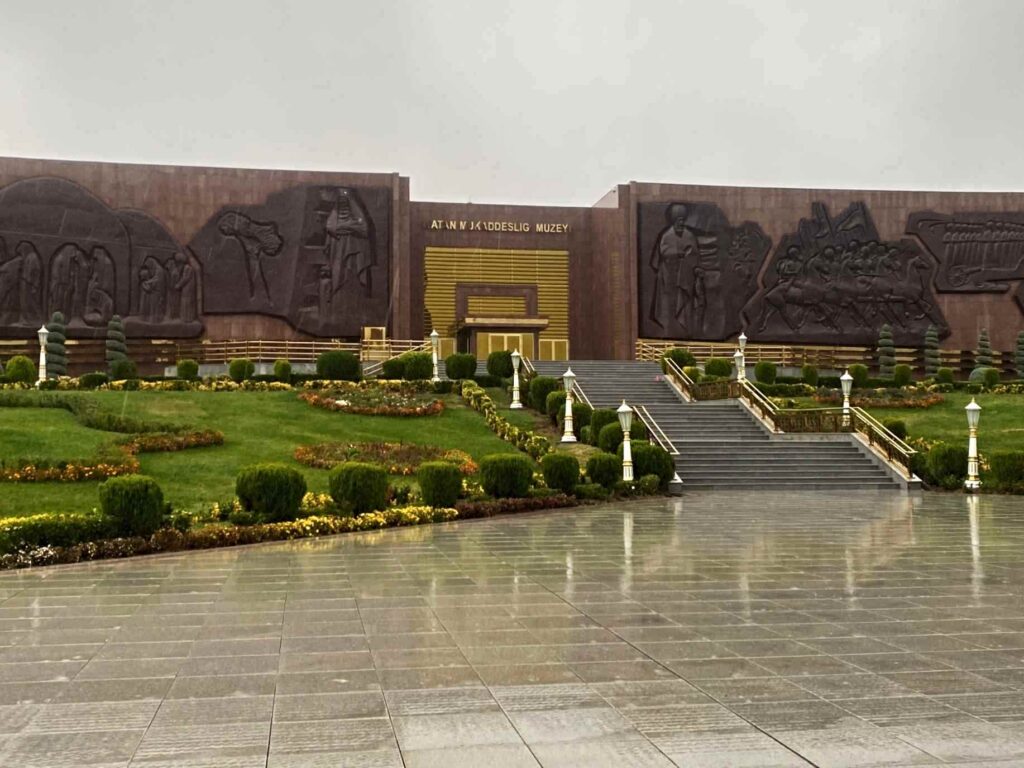
The three monuments in front of the museums are:
The Earthquake Monument is a large bull that has taken the world in its horns and is proceeding to give the planet a good shake. The globe is covered with rubble, but a dying mother manages to lift a small child above the ruins. The golden color of the child stands in sharp contrast with the rest of the sculpture. The child is former President Niyazov, who lost his mother and two brothers during the earthquake.

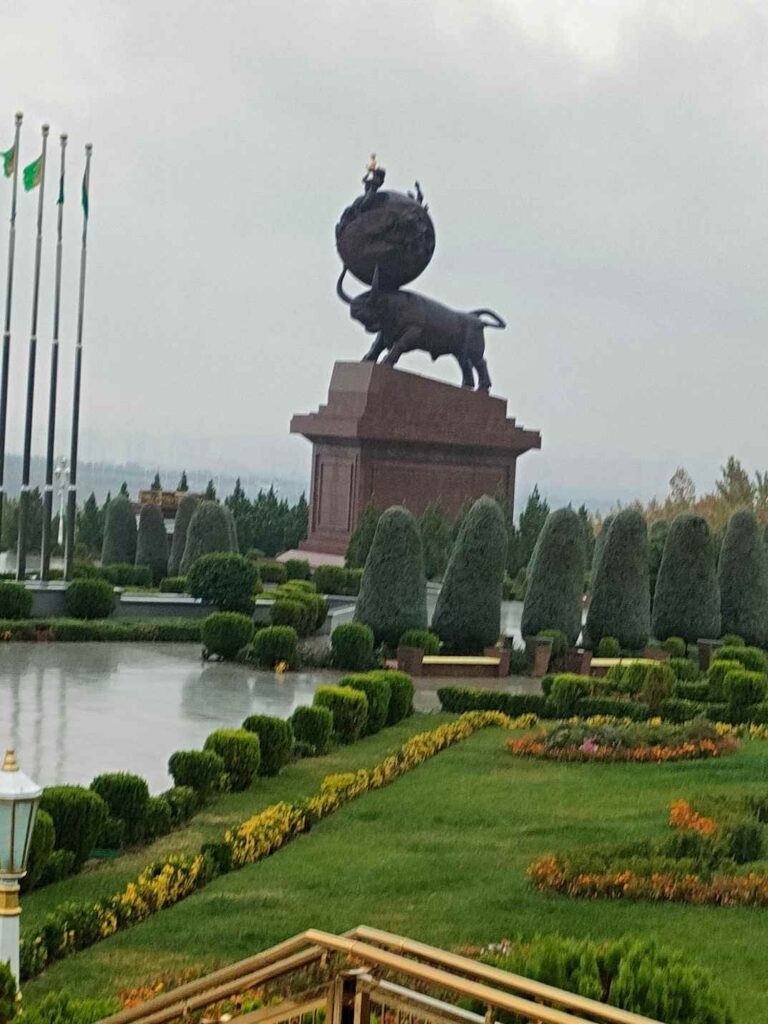
The Eternal Flame consists of five 27-meter high steles forming an eight-pointed star dedicated to those who fell in the 1941–1945 Great Patriotic War.
The third one depicts a Mother standing under an Arch, bowing her head and holding her son in her arms. This honors all who died in other wars fighting for their homeland, Turkmenistan.
The museum inside displays maquettes of the Geok Tepe war in 1881, pictures of Ashgabat after the earthquake, and the last room gives an overview of the prestigious buildings of the country as a sign of rebirth and constant development.
All you need to know before visiting Turkmenistan
Independence monument
This entire statue park summarizes the history of Turkmenistan with large statues of Turkmen historical figures such as Seljuk Beg, identified in Ruhnama as the founder of the Seljuk Turkmen dynasty, that of Sultan Sanjar, whose mausoleum is one of the best-preserved sites in Merv. Oguz Han, the legendary founder of the Turkmen people, holds a golden bow and three arrows. According to the Ruhnama (the “Book of Soul” written by the first president, the Turkmens originated from Oguz Han, who had six sons, each of whom had four sons of their own. From these 24 boys originated 24 clans, from which all of the Oguz people of the world are descended.
The actual Independence monument in the middle is 118 meters high, coming from the date of independence proclaimed on 27th October 1997 (97+21).


Magtymguly, the most Turkmen poet’s statue, also stands there, although a much bigger alone-standing monument was inaugurated for the 300th anniversary of his birth, celebrated in 2024.
The statue of President Niyazov, even larger than that of the historical figures, also stands in the Independence Park.
The Ruhnama Monument
“The Book of the Soul” was written by the first president of Turkmenistan (Niyazov or Turkmenbashy) about Turkmen history and overall guidance for a good life. During his presidency, it was part of the curriculum; questions were asked from that at driving tests and job interviews. He even said that if somebody reads it three times, he will go to heaven. Ruhnama had to be placed next to the Quran in each mosque. A copy of the Ruhnama was even sent to the space. It contains general instructions for how to be happy. He suggests people be satisfied, accept their lot, be good to their parents, and celebrate living in the best country in the world. Since Niyazov died, it is no longer part of the curriculum, and it is not required to have a deep knowledge of its content as it was the case before. The monument of the Ruhnama book still stands. It used to open daily and this particular page of the book was recited daily.
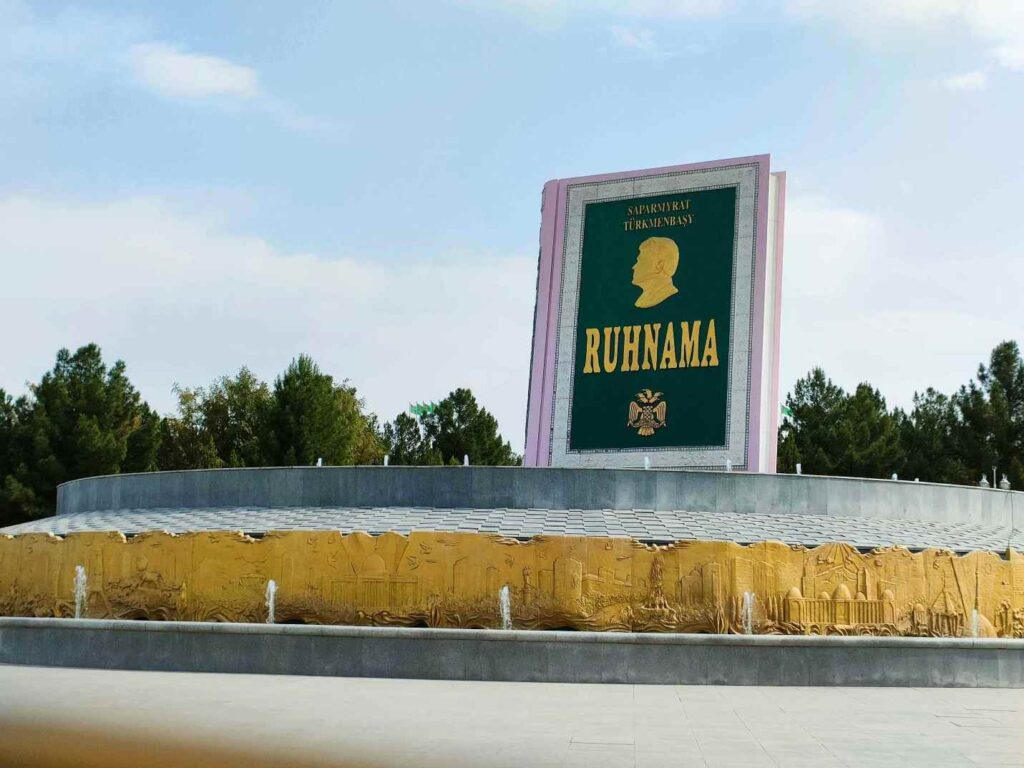
Alem Entertainment Centre
The largest indoor Ferris Wheel on earth was completed in 2012 to compete with the Golden Eye in London. Again, its shape also reflects the eight-pointed star of Oguz Khan, the ancestor of all Turkmens.
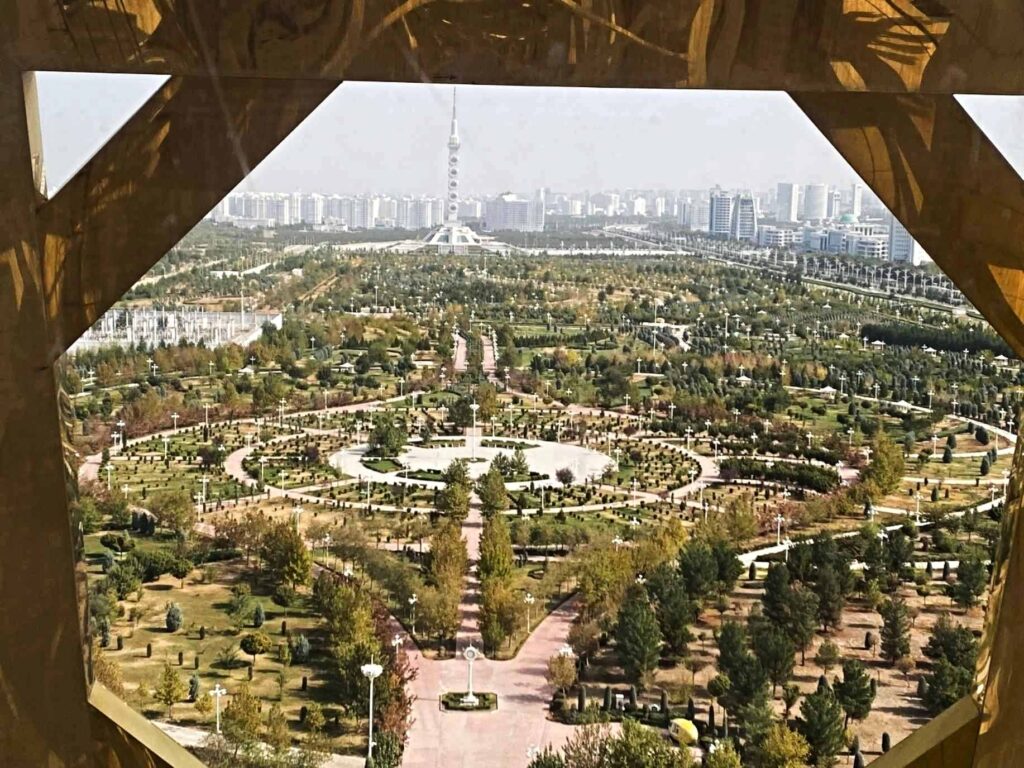
Monument to the Constitution
It was built in 2011 to commemorate the 20th anniversary of the Turkmen constitution. The symbols represent the five tribes of Turkmenistan. At 185 meters, it is the second tallest building in Turkmenistan.
Ashgabat National Museum of History
The National Museum is in an impressive building with blue domes and the 4th tallest flagpole on earth (it was the tallest when erected). The upper floor gives an overview of the Turkmen history starting from the earliest time, through the first state, Margush, the Parthians and Nisa, the history of Konye Urgench and once one of the biggest cities along the Silk Road, Merv and Anau with one of the most unusual and spectacular monuments of Islamic Central Asia. The museum gives you a better understanding of Turkmen history and gives you an idea of the original appearance of the historical sites.
The ground floor has a small section about the famous Turkmen carpets, though a separate museum is dedicated to that with the world’s biggest carpet. And another one displays the achievement of President Gurbanguly Berdimuhamedow (2016-2022).
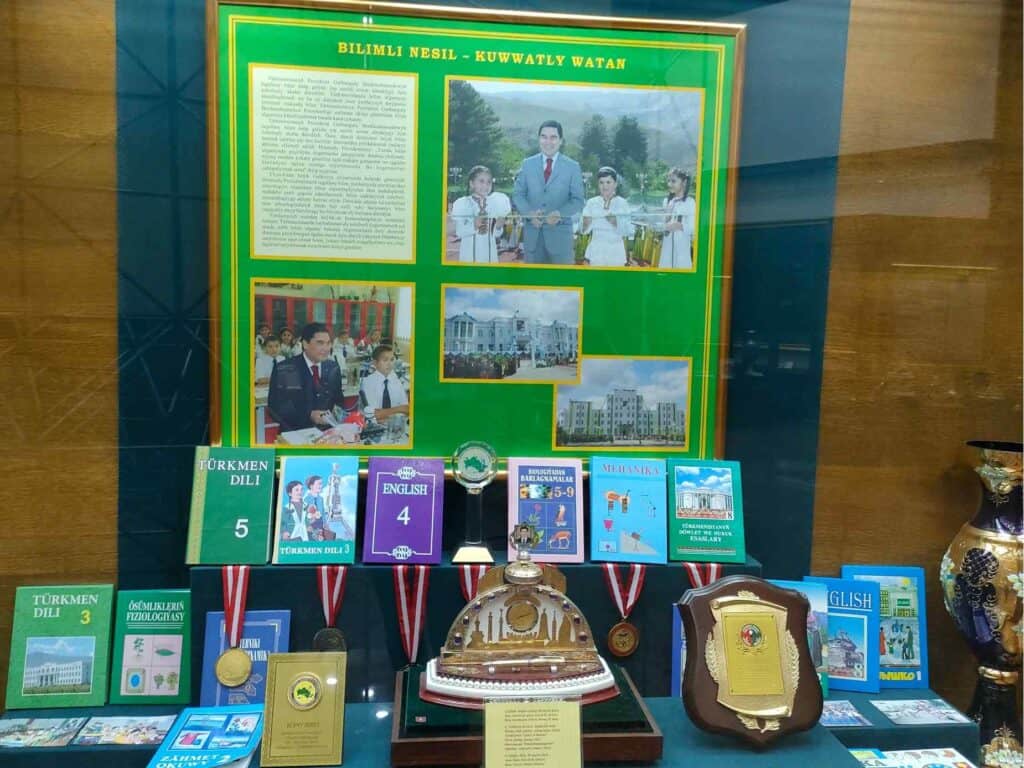


Ertugrul Gazi Mosque
Ertugrul Gazi was the Turkic leader who settled his tribe in today’s Turkey from the Mongol advance in Central Asia, and his son, Osman, became the founder of the Ottoman Empire. Its architecture recalls the Blue Mosque in Istanbul.
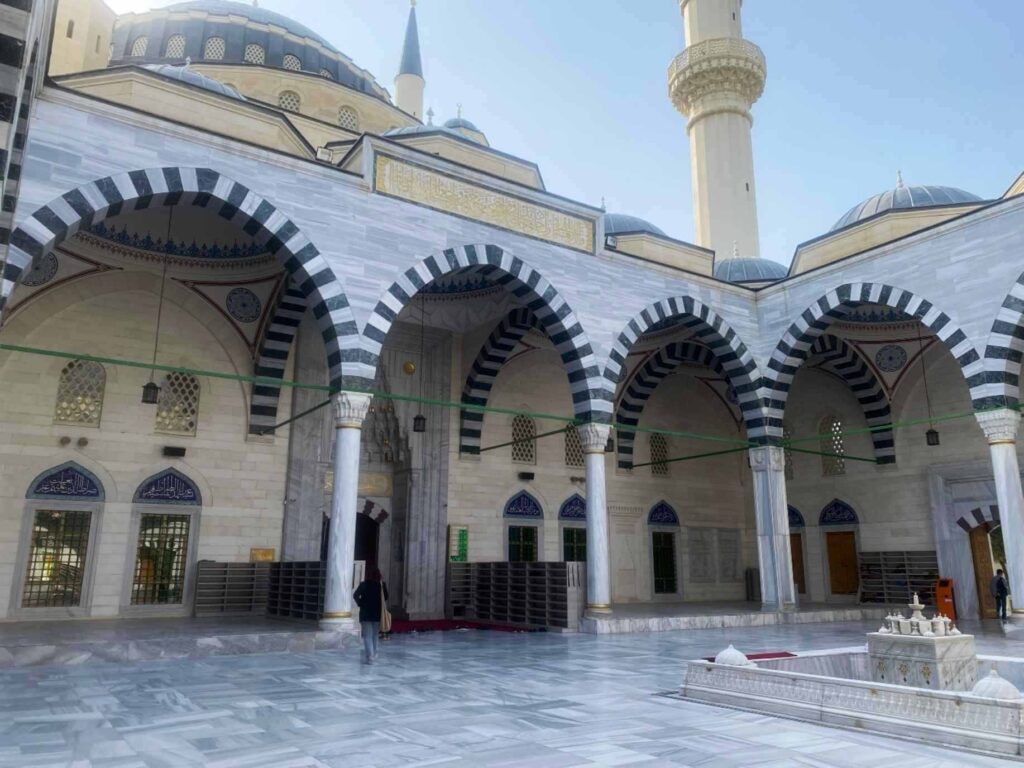
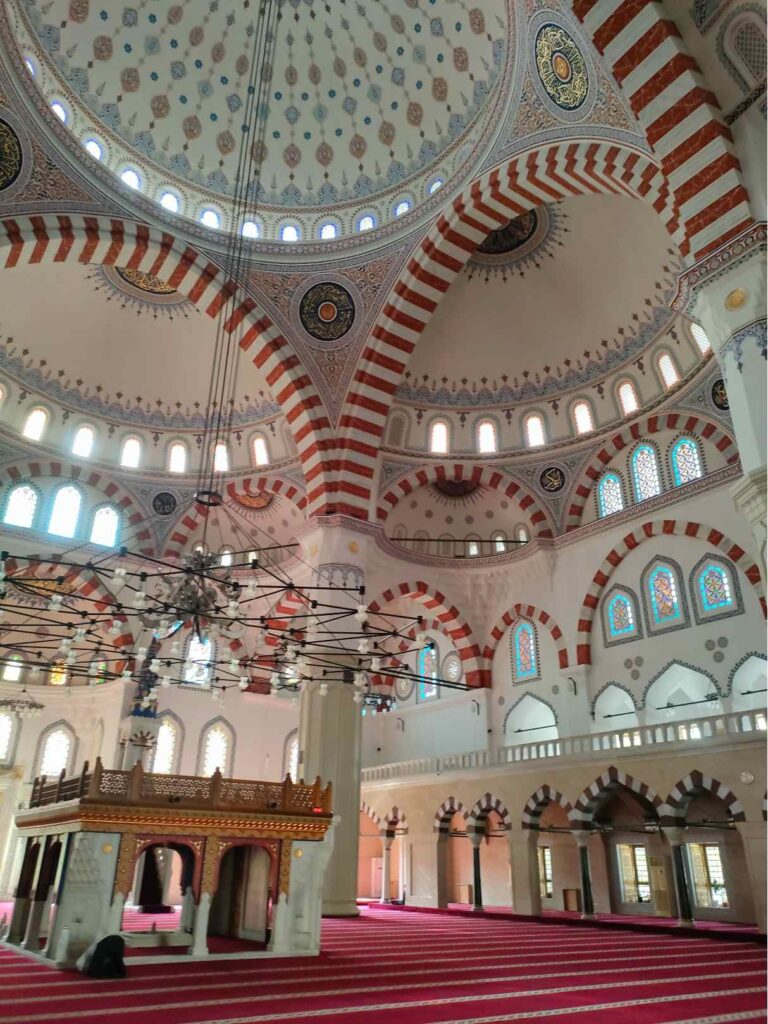
For Children
There are many buildings and attractions serving children. Some palace-like shopping malls only sell children’s stuff in the modern white marble district. The Land of Fairy Tales, which locals call “Disneyland,” is the most popular fun park, and its attractions are based on Turkmen stories and characters. Nearby is the Turkmen Puppet Theatre, which performs on the weekends.
Carpet Museum
Carpets like Akhal Teke horses are national treasures of Turkmenistan, so a visit to the museum helps you get a better understanding of Turkmen culture. Carpets are used in every home, and every Turkmen woman used to learn how to make them. Most Turkmen carpets are red, with each of the 5 regions of Turkmenistan having a unique design. For example the gul (motives) of the Yomud tribe, which occupies the Caspian shores of western Turkmenistan, many marine-related items. Thus the elongated shape of the “gul” is said to represent a boat, or possibly a fish, and the design features repeated anchor shapes. Around the edges of Yomud carpets a pattern resembling seashells intertwined with seaweed may be identified. All visitors will get a guided tour in the museum, during which your guide will explain all you need to know about Turkmen carpets.
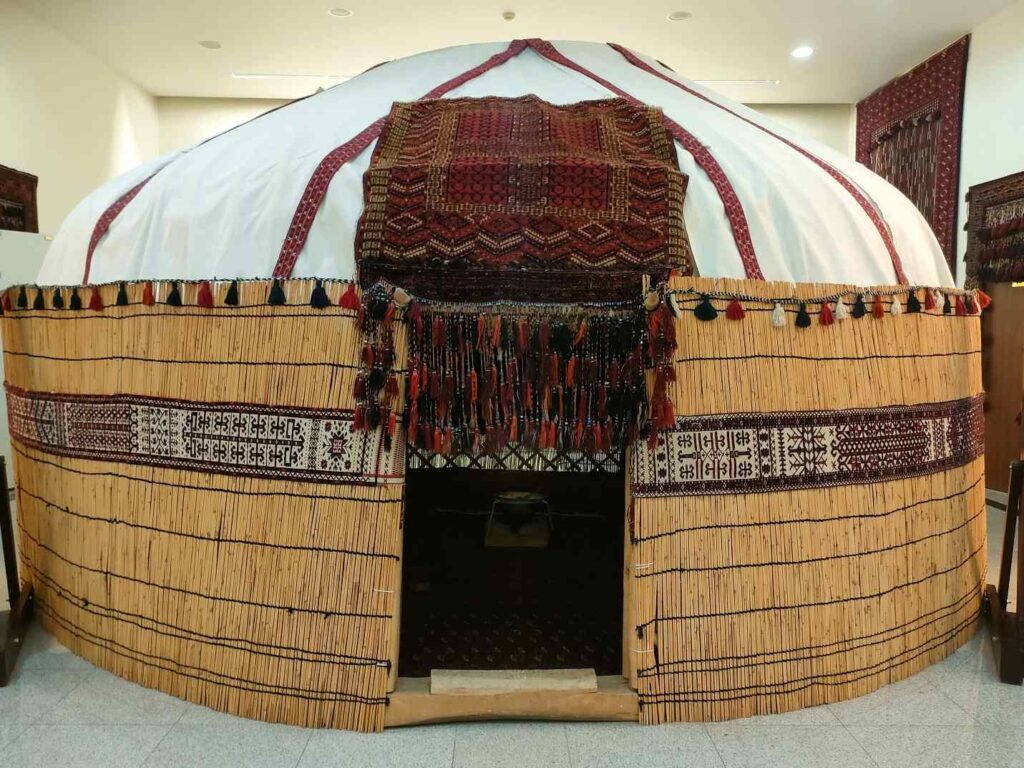

The highlight of the visit to the Turkmen Carpet Museum is the world’s largest handwoven carpet of 301 m2 (14* 21.2 m) that was made to commemorate the 10th anniversary of Turkmen independence. Another impressive carpet was initially woven by 40 weavers for the Bolshoi Theater in Moscow in 1941-42 but was too heavy to be used, so it was returned.
You can also see some rarely found examples of two-sided carpets that are extremely hard to make or some with 3D patterns. The traditional Turkmen carpets have a recurring “gül” (motive), but the museum also displays carpets depicting landscapes or famous local monuments that are even harder to make.
Lenin statue
While most old buildings were demolished or removed after independence to give space for modern urban design, this still stands in “old Ashgabat”. Partly because it miraculously survived the earthquake and also because of its attractive tile decoration of carpet design. It is meant to signify the unity of the people of the USSR and Turkmenistan. During the Soviet period, newlyweds came here to take wedding photos.
Inspiration Park
Opposite Grand Turkmen Hotel is a popular place for locals to stroll around, with fountains lit with colors.
Monument of Magtymguly Pyragy
The 60-meter-high statue of the famous Turkmen poet and humanist standing on a high pedestal at the foot of the Kopetdag mountain was unveiled in 2024 for the 300th anniversary of his birth. This was done with a spectacular multimedia show and fireworks. It is part of a cultural complex that includes other renowned writers such as Balzac, Goethe, Tagore, Shakespeare, Dostoevsky, and Dante.
This monument became part of a new cultural park complex, which includes 24 statues of world-renowned writers and poets from different eras and countries.
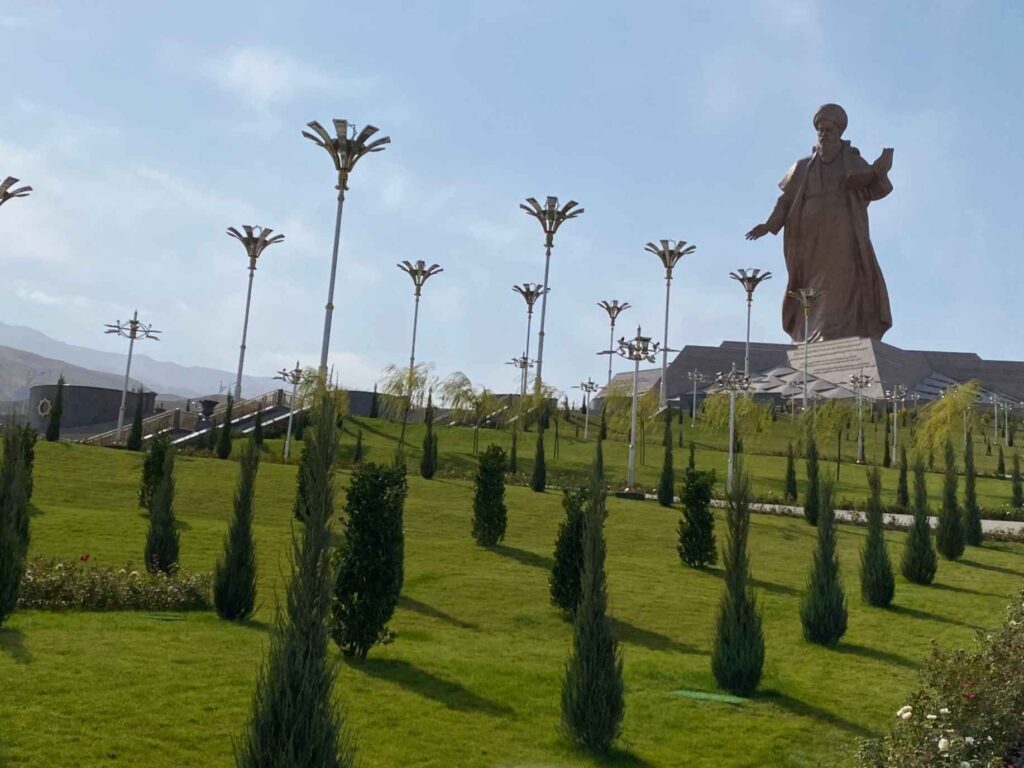
From the Magtymguly statue, you can see part of the 37-km-long “Serdar Health Path” constructed during Niyazov to enhance people’s fitness. His ministers had to complete it once a year, but the subsequent presidents didn’t enforce it after. It is not an easy track with steep stairs from the beginning, but it offers an excellent view of Ashgabat.
Turkmenistan TV tower
On top of a hill stands the 211-meter-high TV tower, the world’s largest architectural representation of a star, another reminder of Oguz Khan, the legendary Turkmen warrior. It has a revolving restaurant with an excellent view till Iran, however, it is unfortunately not open to public.
Monument of the Akhal Teke horses
There is even a monument dedicated to the famous Akhal Teke horses, considered as national heritage of Turkmenistan.
Read more about the Akhal Teke horses in my post “what you need to know about Turkmenistan”
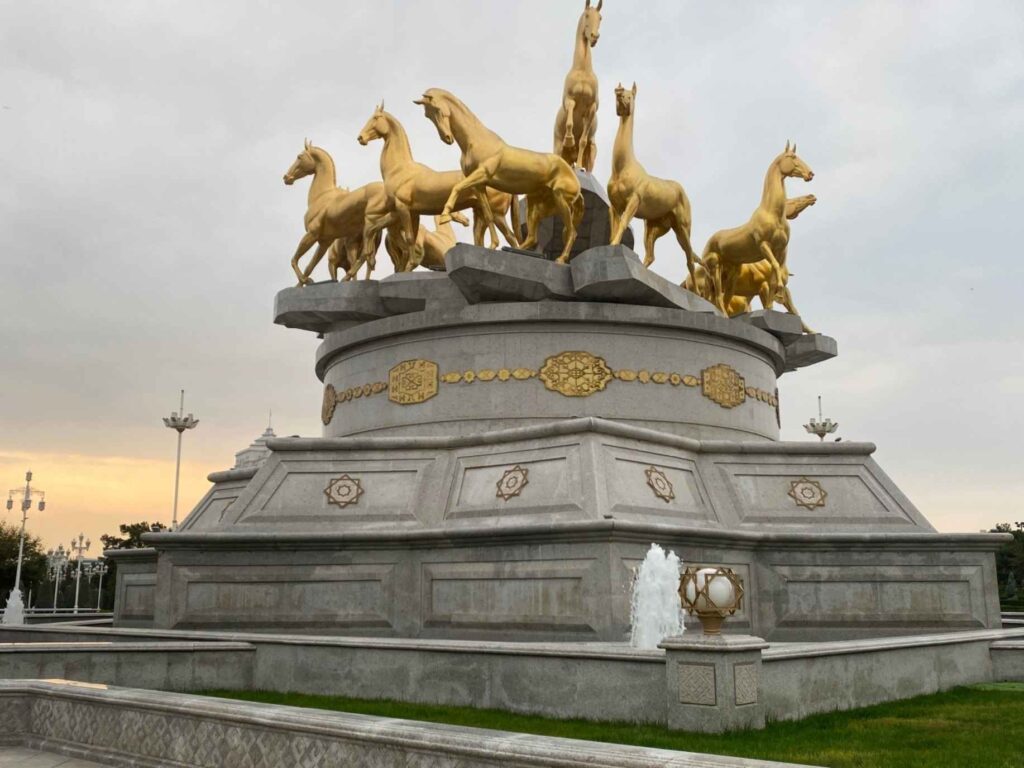
Circus
Circus, theaters, and cinemas were banned during President Niyazov (Turkmenbashi) for “not being enough Turkmen”, but they have been reopened again under the new president. Circus has a two-hour show at the weekends, but ask for the schedule when you are there. The Akhal Teke horse show is always part of that.
Tolkucha market
The largest open-air market in Central Asia can be a good program if you are in Ashgabat at the weekend (Saturday-Sunday). There is everything here from carpets to camels and other animals. If you don’t have so much time, go to the Russian bazaar in the old part of Ashgabat.
Around Ashgabat
Nisa – a UNESCO World Heritage Site
Nisa is 15 km from Ashgabat, and you can best visit it together with the Turkmenbashy Ruhy mosque in Gypjak.
As the archeological site spreads on a hill, it offers excellent views of the Kopet Dag mountains. Today, only a fraction of what Nisa was once before is seen. The archeological site of Old Nisa was a Parthian (3rd BC- 3rd AD) royal residence or a religious complex, or maybe both, that was abandoned at the end of the Parthian period. However, next to that, today’s Bagyr village was New Nisa, which was revived in the 5th century and existed much longer.
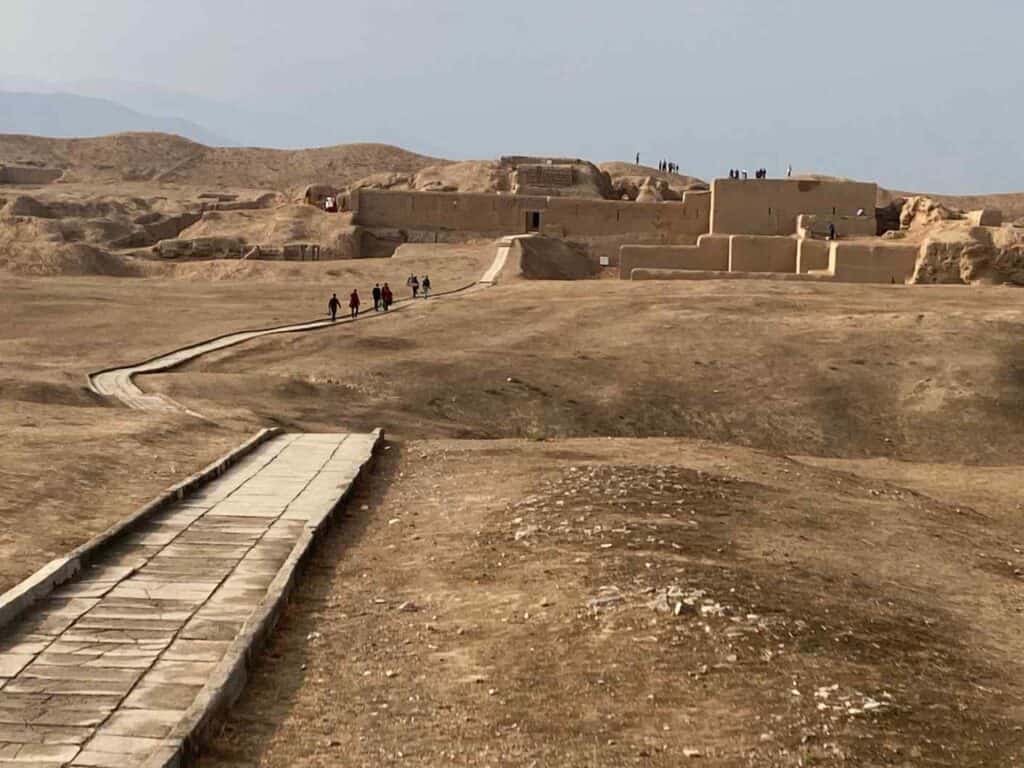
It flourished under the Seljuks in the 11th and 12th centuries and later fell under the rule of the Khorezmshahs. The Mongols sacked the town in 1220, but it revived, to be finally abandoned in the early 19th century.
The ivory drinking vessels dating to the Parthian period have become one of the symbols of Turkmenistan.
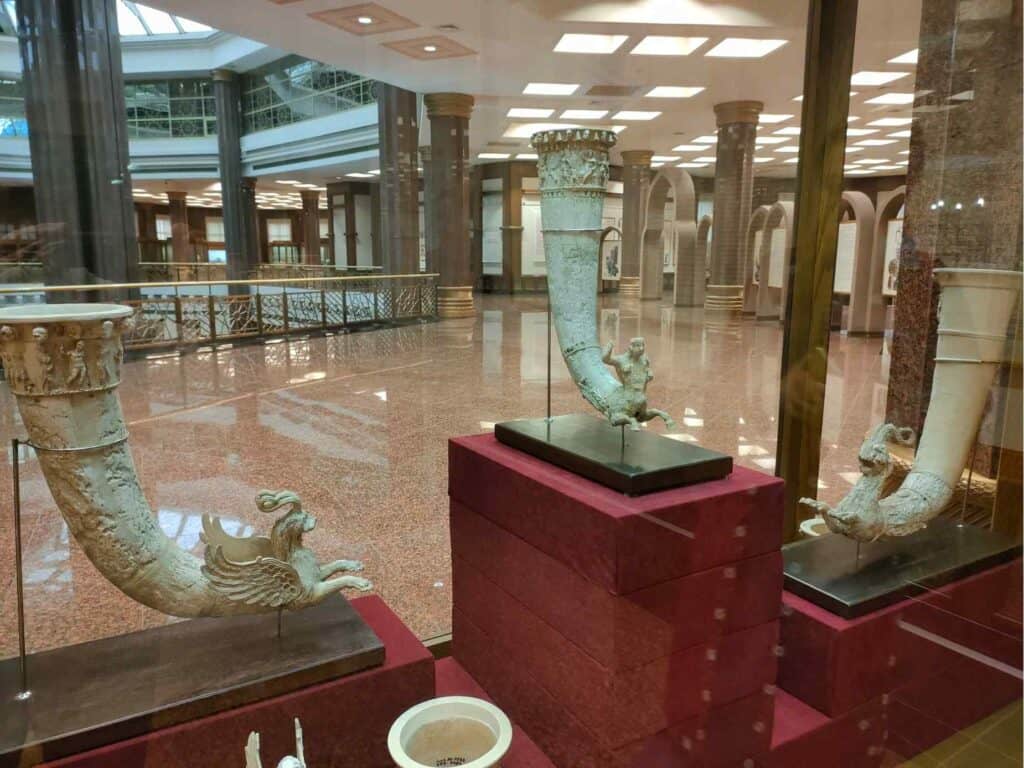
Geok Tepe
Geok Tepe plays an central part of the Turkmen history as its fortress was the scene of the Geok Tepe battle against the Russians in 1879 and 1881. In 1879, the Turkmen could surprisingly stop the large Russian force expanding gradually over Central Asia. The defeat at Geok Tepe marked the first major setback in their imperial goals in 164 years. However, the Russians didn’t give up on it and instead, the second time, they were much more prepared. Two years later, the most feared Tsarist general, Skobolev, returned and conquered Geok Tepe.
By 1895, all of Turkmenistan was controlled by Russia. Heavily destroyed, but the remains of the fortress are still seen.
Geok Tepe is where you can visit Akhal Teke horse farms and here stands one of the biggest mosques of Turkmenistan, the Saparmurat Haji Mosque as well.
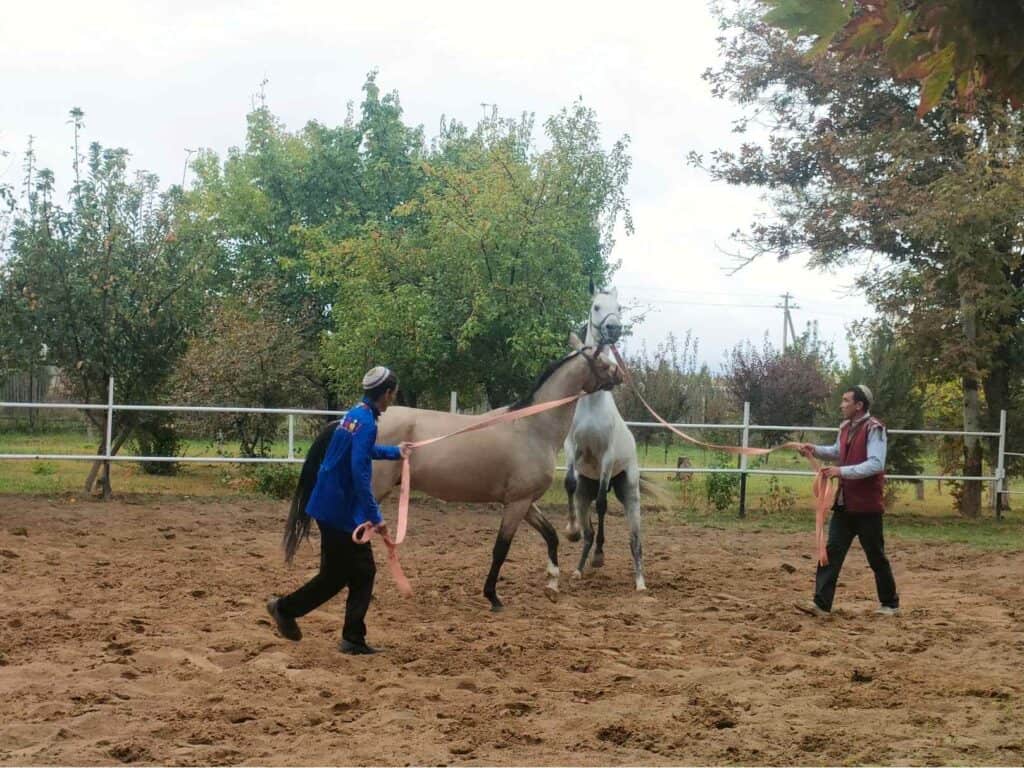
Saparmurat Haji Mosque
President Niyazov was the first in Central Asia to complete the “hajj” (holy pilgrimage to Mecca, one of the five pillars of Islam) in 1995, to which the mosque was dedicated. It has a central place during the annual commemoration of those killed during the Geok Tepe Battle on 12th January. It has four minarets of 63 meters (the age when Prophet Mohammad died), a stunning interior decoration with a dominating pale blue color, and a huge French chandelier weighing 2 tons and adorned with 260 lamps. The tile decorations recall the Turkmen carpet design.
Türkmenbaşy Ruhy (Gypjak) mosque
The mosque underwent a reconstruction in 2024 and became the largest mosque in Central Asia, with a capacity of 10,000, though it doesn’t seem crowded. The minarets are 91 meter-high, referring to the date of independence. The mosque was built in Gypjak village, the birthplace of President Niyazov, a few kilometers from Ashgabat.
The mosque, surrounded by pools and fountains, has a remarkable central dome. The inscriptions inside are quotations from both the Ruhnama and the Quran, which made it controversial among Muslims. In addition, above the entrance is written: „Ruhnama is a holy book, and the Quran is the word of Allah.”
Besides the mosque stands the domed mausoleum of Turkmenbashi, which was built in the shape of the mosque. Niyazov completed it 2 years before his death. His mother and two brothers are also buried here.
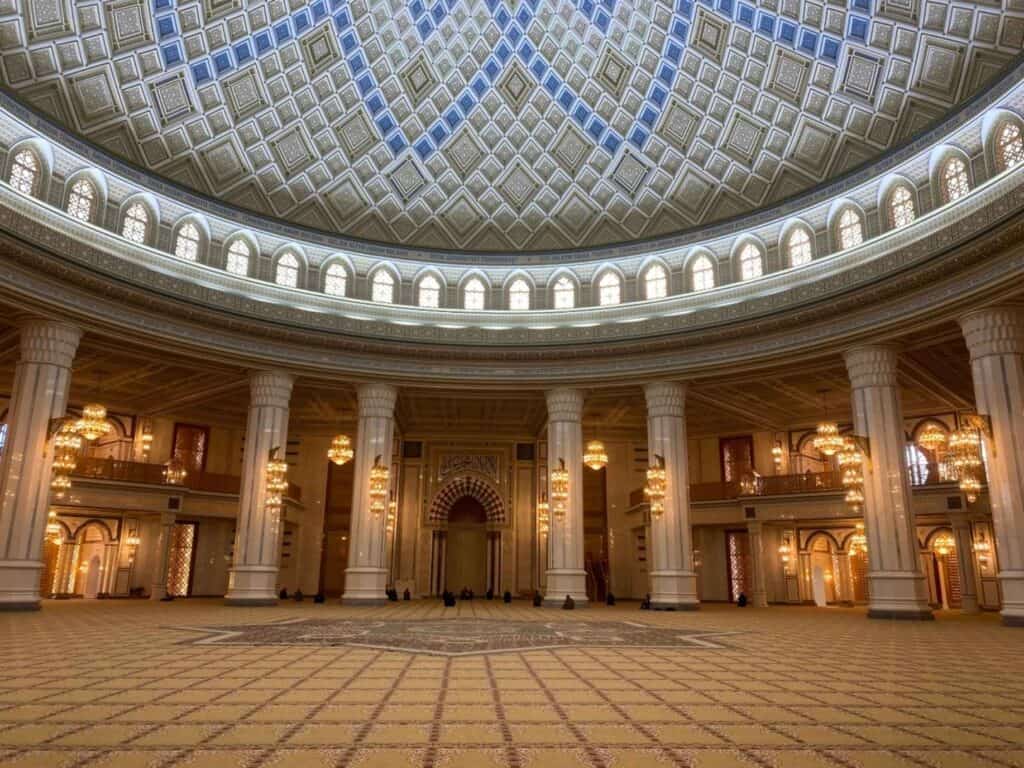
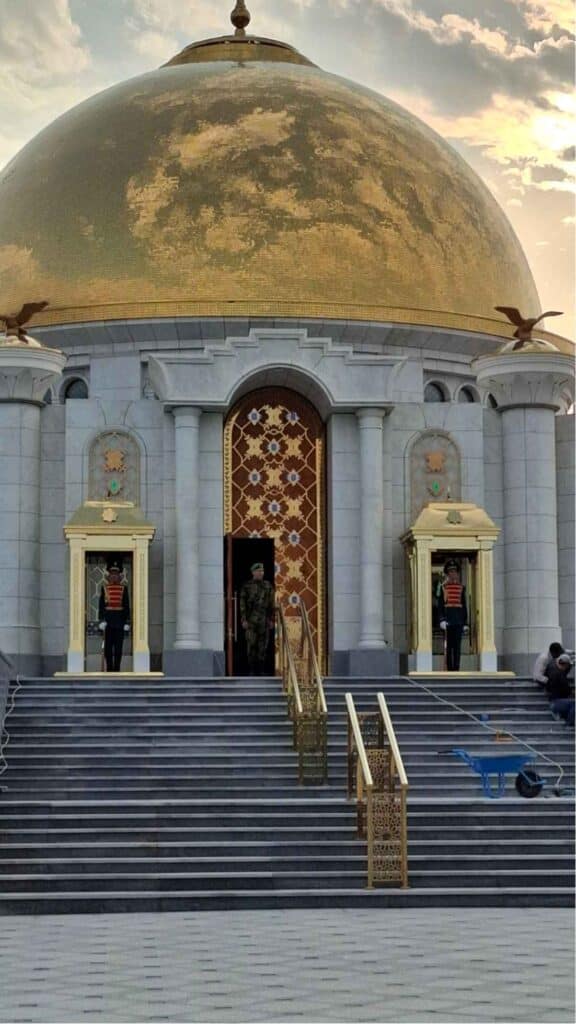
Kow Ata lake
This is always part of the tourist programs, and this cave, accessible through a deep flight of stairs, could be a unique experience with warm water; however, in the last few years, the water level has dropped, and it is hardly possible to swim there. The water has a high mineral content, and it is advised not to stay too long.
Merv, UNESCO World Heritage
Merv was first settled in the 3rd century BC, then extended by every ruler, and from an oasis village, it grew to become a large city along the Silk Road. Alexander the Great renamed it after himself, and later, Arabs and Turks ruled over it.
It had its heyday in the 12th century as a flourishing stop along the Silk Road and one of the largest cities in the world, competing with Cairo, Damascus, and Baghdad. It was a wonder of the ancient world.
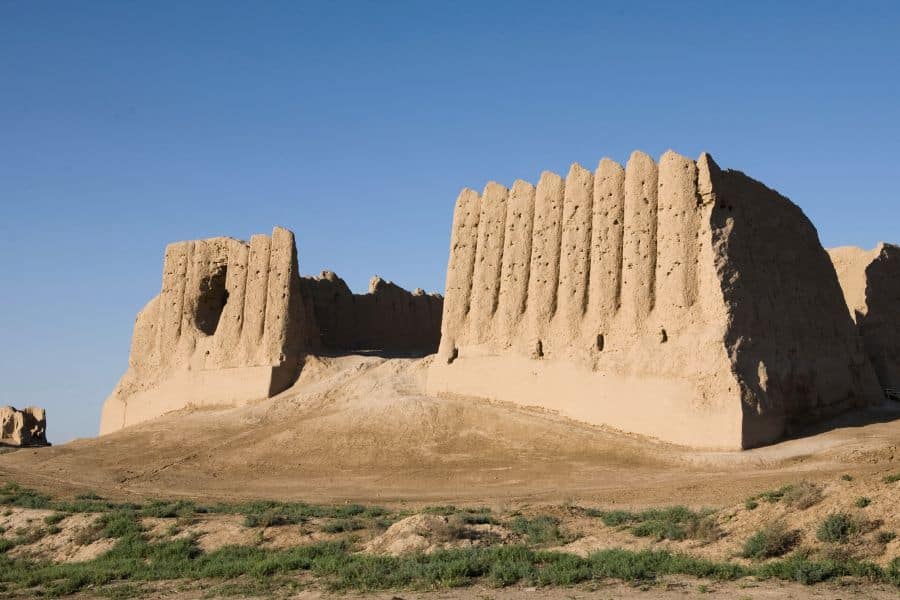
Central Asia was in the middle of the Silk Road, with key routes crossing Uzbekistan and Turkmenistan. The Silk Road was one of the greatest trade routes ever developed. Linking China and the Roman Empire, the two strongest civilizations in the world two thousand years ago, it crossed mountains, deserts, and inland seas. The most traveled route passed through Kashgar to Samarkand, Bukhara, and Merv. In Merv, the Silk Road split. The decline of the Silk Road began when trade by sea became cheaper and faster, starting in the fifteenth century. The once unique products of China (silk, gunpowder, and paper) were being copied and produced more cheaply in Europe, reducing the need for large amounts of imports. With China retreating to focus inward and staying behind the Great Wall under the rule of the Ming Dynasty, the cities on the Silk Road began to decline and become entirely abandoned.
In Turkmenistan, Merv mainly flourished thanks to the Silk Road, while Amul (today’s Türkmenabat), Konye-Urgench, and Nissa also grew due to the caravan trains that passed through.
All you need to know before visiting Turkmenistan
The hordes of Genghis Khan destroyed Merv in 1221. By that time, he already conquered Mongolia and two-thirds of China. Merv never recovered from this slaughter, and the Persians and the Emir of Bukhara fought over it. A final victory in 1785 by Emir Shah Murad led to the 100,000 inhabitants being deported to an oasis near Bukhara.
Sadly, one of the largest cities on earth was reduced to mud and dust with no inhabitants. What you can see now are the remains of forts, city walls, ice stores, and residential houses. It is still a unique experience to stand at the remains of this once spectacular and historically significant city.
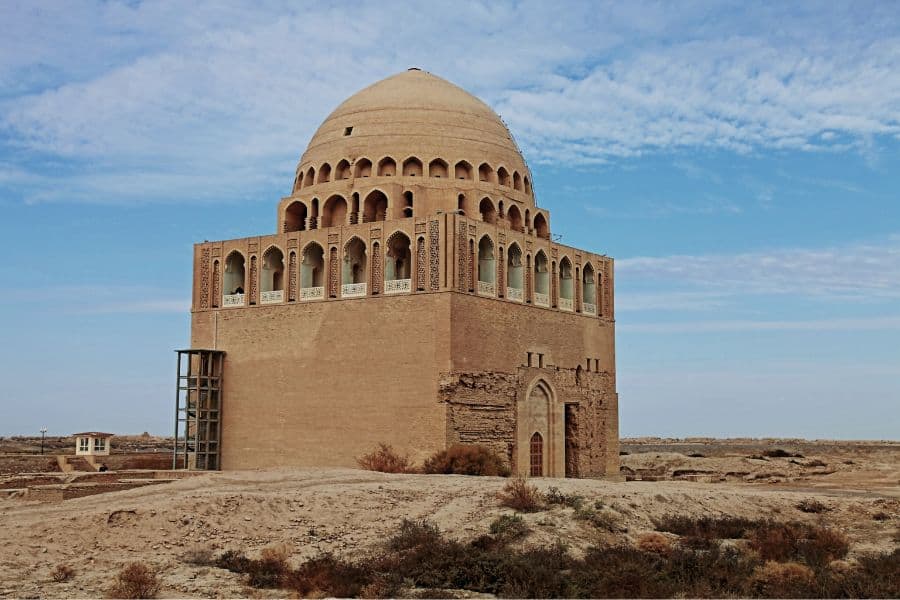
Merv melons were highly prized, culture flourished, and Islamic philosophers, astronomers, doctors, and scientists came to the city. It was a cultural melting pot with Buddhists, Jews, Christians, and Zoroastrian Persian locals. Most of the population converted to Islam, and it became one of the most important Islamic centers.
The Mausoleum of Sultan Sanjar is one of the central monuments that many pilgrims visit; some prostrate themselves before on the ground while entering, although Sultan Sanjar’s body was removed during the Mongol invasion and reburied in an unknown place. They still lived in Merv for centuries, but it never regained its former glory; only the mausoleum from 1157 reminds us of the golden age when it was one of the largest cities in the world. Due to the danger of earthquakes, a double-shell dome was built, which was used by Brunelleschi 300 years later in the construction of the cathedral in Florence.
After the dissolution of the Soviet Union, Merv has become the financial center of the country, the 2nd largest city, and the gas capital of the country, with huge natural gas reserves around the city.
Nokhur village
Nokhur mountain village is worth stopping to see a place where ancient beliefs are still strongly present. There is an ancient tree considered sacred by locals and a unique cemetery adorned with ram horns. Locals believe that it helps the soul get to heaven faster and protects the body as well. Nokhur also has a lively market with a wide choice of vegetables, fruit, and herbs (each specified for what decease it cures) and, of course, talismans and amulets.
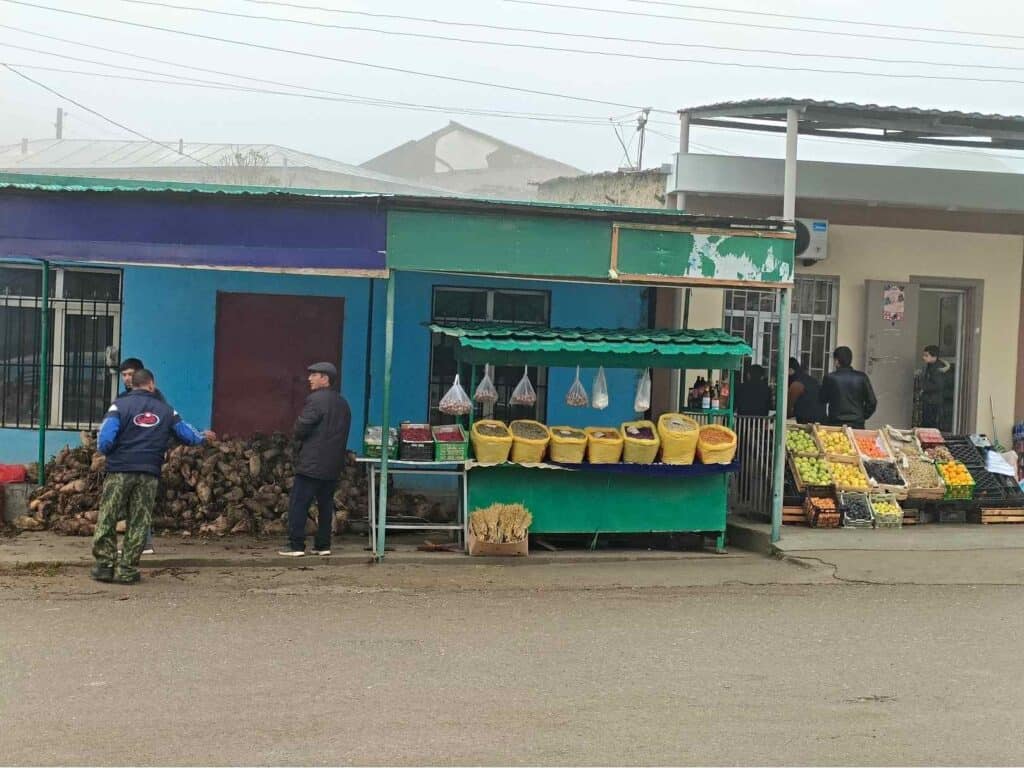
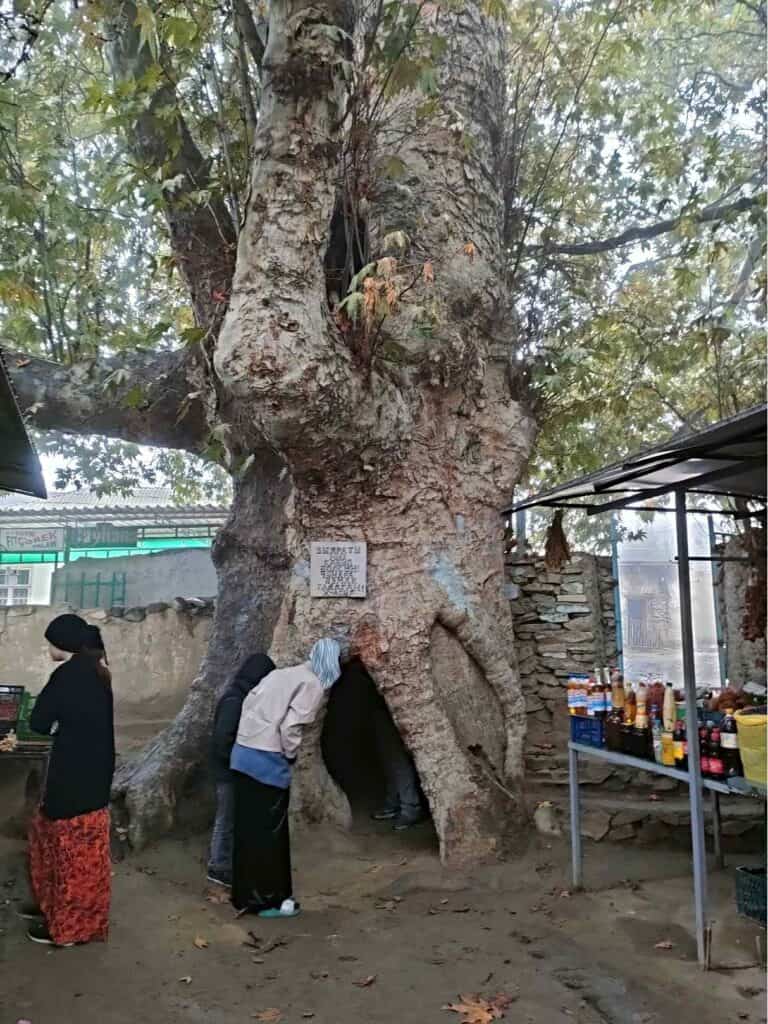
If you have more time and the weather is good, you can drive further and spend some days in nature. The area has some waterfalls, and pomegranate orchards, and its greenery is in contrast with the semi-desert that covers most of the country. There is even a simple guesthouse where you can stay overnight.
The village is a short detour from the main road connecting Balkanabat and Ashgabat.
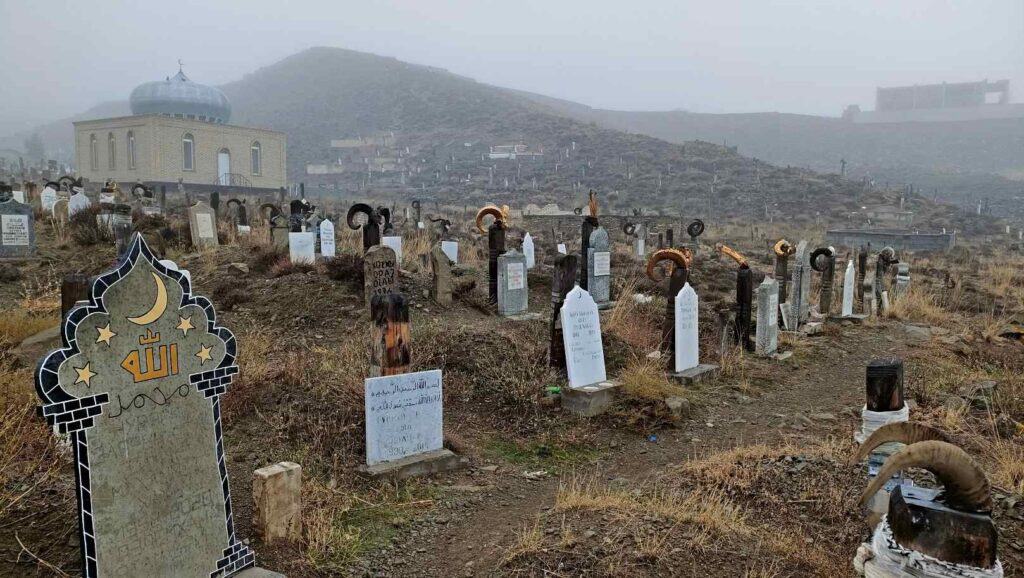
Anau – on the way to Mary
You can stop here on the way to Mary/Merv, but it is not worth making a trip only for that from Ashgabat. Although it is an important pilgrimage site for locals, not much remains of the middle-aged mosque. Before excavations started, there were only two big mounds at the site. The Russian General A.V. Komarov, who was in service after the Russian victory over the Turkmens in Geok Tepe in 1881, was an amateur archeologist who noticed that they were man-made and that treasures could be hidden inside. Instead, they found the remains of an ancient civilization, which later turned out to be 7000 years old. After that, an American geologist carried out more extensive excavations.
Anau was a significant urban center between the 2nd and 5th centuries. It was also a stop along the Silk Road.
Anau became known after its unusual mosque, which dates back to the 15th century and was decorated with dragon signs, probably due to the Chinese influence spreading along the Silk Road. Unfortunately, the mosque was destroyed during the big earthquake in Ashgabat in 1948, and only two pillars are still standing. Locals still consider it a venerated pilgrimage site; they come to pray, make wishes, tie their colorful pieces of fabric to the scrubby trees nearby, or place amulets in the brick walls.
Darvaza, the “Door to Hell” or “Gates of Hell”
Darvaza, the burning gas crater, is a strange attraction of Turkmenistan that exists thanks to a failed attempt to extract oil. It is located approximately four hours from the capital, Ashgabat, in the middle of the Kara Kum desert, only accessible by 4×4 cars. Since it is most spectacular at night, all visitors spend the night in simple yurts in a camp near the crater. It is a great opportunity to spend time in nature.
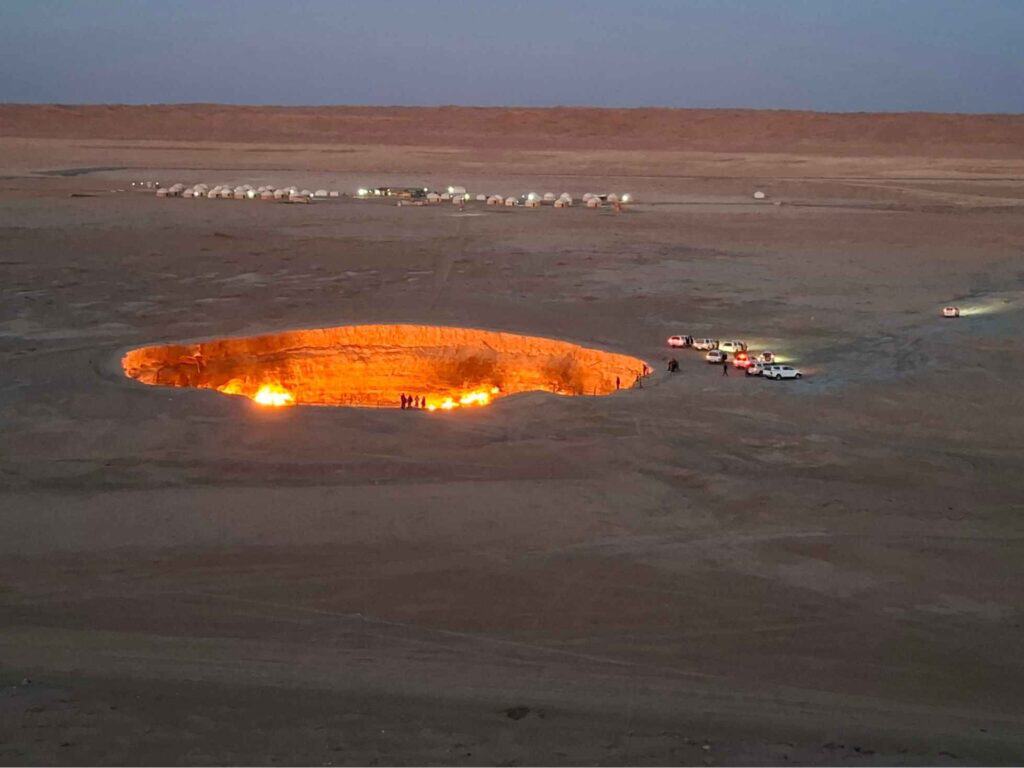
It is not clear how all that began. Most probably, Soviet engineers started to drill the ground in search of oil in 1971, but the ground collapsed and formed a crater. A little later in the 1980s, they tried to ignite the crater to prevent poisonous gases from spreading. They underestimated the volume of gas, and the burning hasn’t stopped since then. Others assume that the crater was formed in the 1960s and was only flamed in the 1980s.
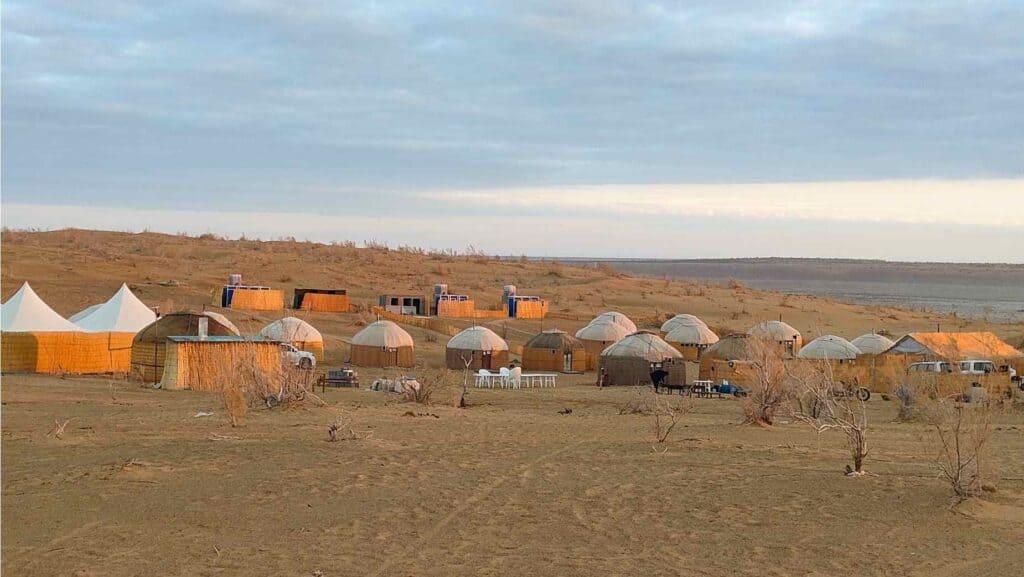
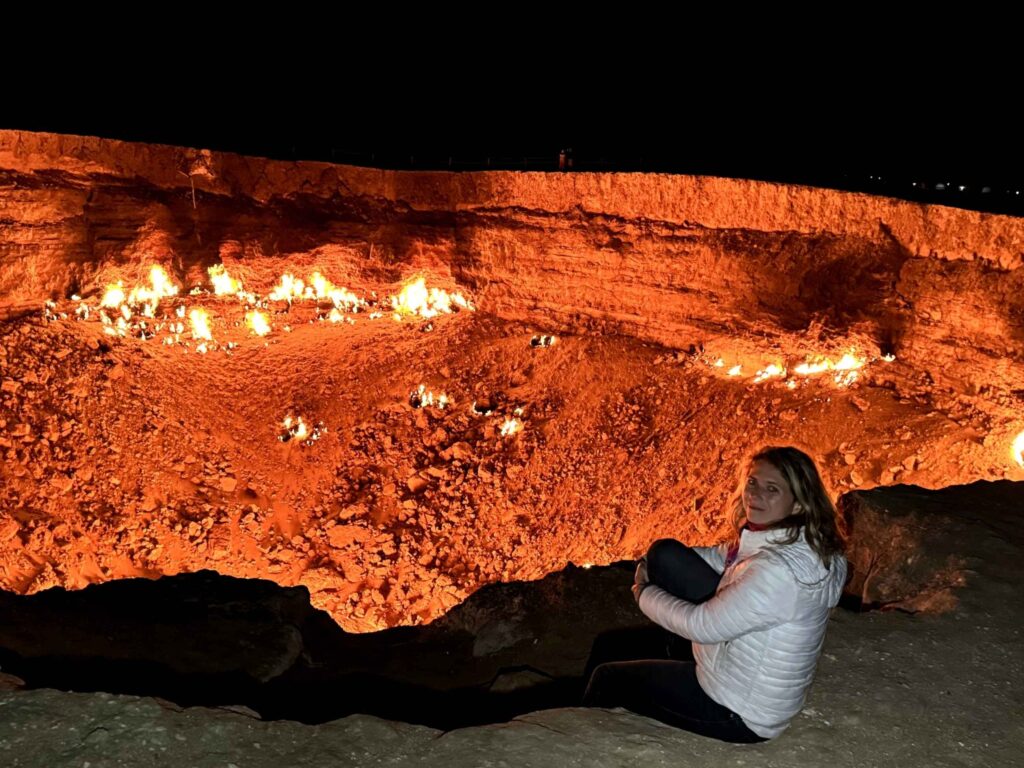
Whatever is true, Darvaza became one of Turkmenistan’s most famous tourist attractions. However, President Berdimuhamedow announced in January 2022 that the burning must be stopped for health and environmental reasons and because it blocks further gas fields’ development in the area.
So, now you will see that a noisy tower was set up to absorb the gas from the crater and eventually put it out. When will this happen? Nobody knows. It was also not expected that the crater would burn for decades. However, locals estimate that the Darvaza gas crater has only 1-2 years left.
So if you want to see it, go to Turkmenistan now!
Yangykala canyon
Turkmenistan is a partly forgotten country, and only a few of the visitors head to the far west of the country to see a unique natural attraction, the Yangykala Canyon. Millions of years ago, it was all under an ancient ocean. When the water dried, the wind and rain cut gorges and cliffs, forming today’s visible stunning rocky landscape. This is a place hardly visited by Turkmen either, far in the vast emptiness of Turkmenistan. It is called the “Grand Canyon of Central Asia”, but don’t get confused, there is no river cutting through the canyon. As mentioned, it is the result of the retreating water.
However, you have to make quite an effort for the sight: it’s a three-hour drive from Türkménbashi by off-road vehicle, and you have to do the same on the way back.
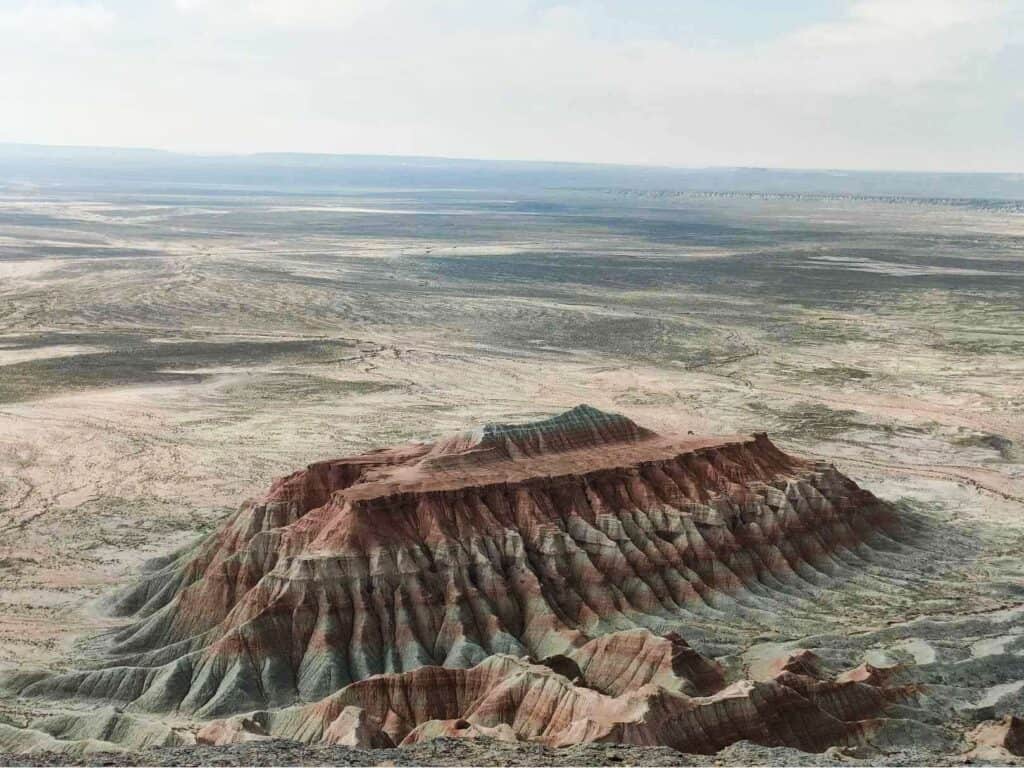
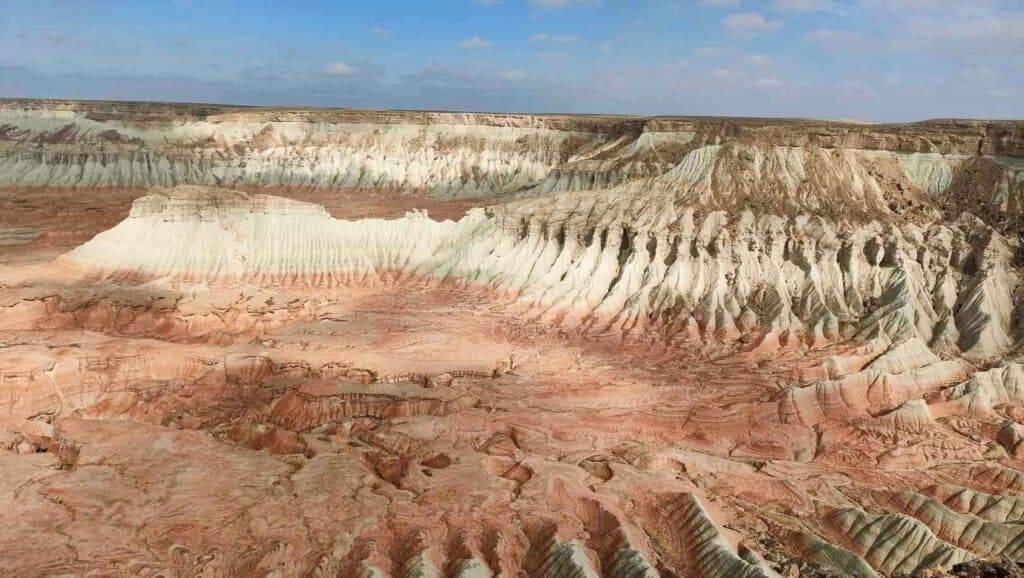
Konye Urgench– UNESCO World Heritage
Located near the Uzbekistan border, Konye Urgench is one of three World Heritage Sites in Turkmenistan. Once an important stop on the Silk Road, in the 12th century, the city on the banks of the Amu Darya was the capital of the Hvarezm empire. Among the scattered 11th-16th century monuments is the Kutlug-Timur minaret, the largest in Central Asia (62 meters high), as well as smaller mausoleums, including the Turabek Khanum Mausoleum, known for its blue tile decoration, and the gate of a caravanserai. Their architectural style and execution also influenced the later architecture of Iran, Afghanistan, and the 16th-century Indian Mughal Empire. In addition, many Turkmen make pilgrimages to the graves of local holy people.
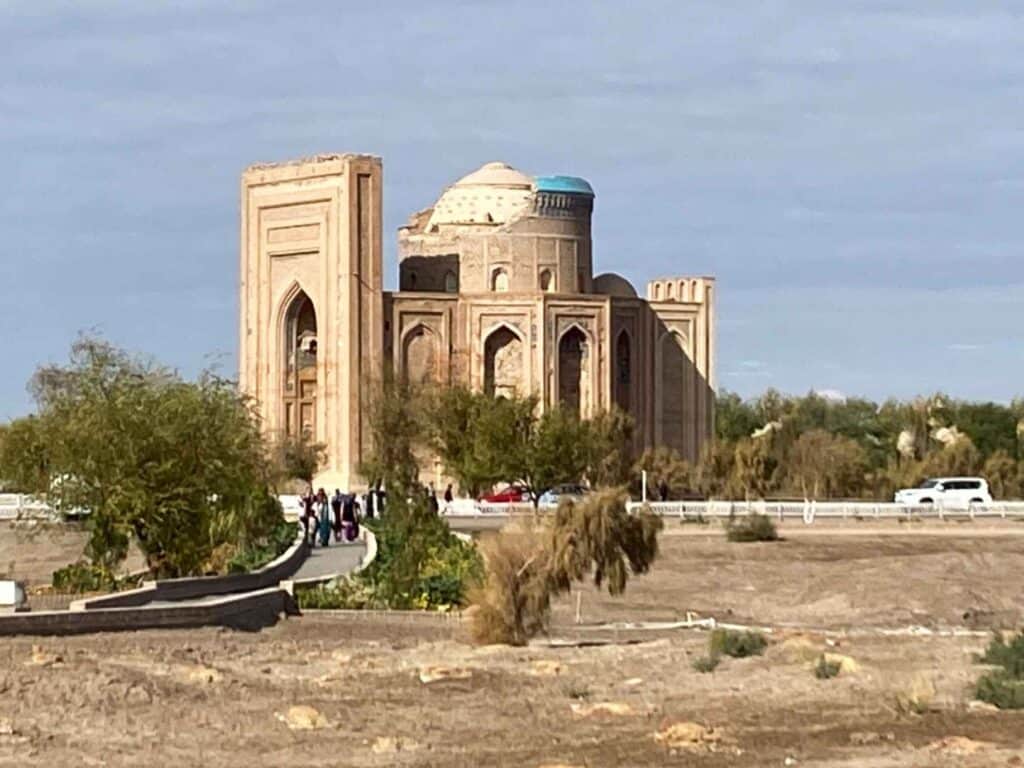
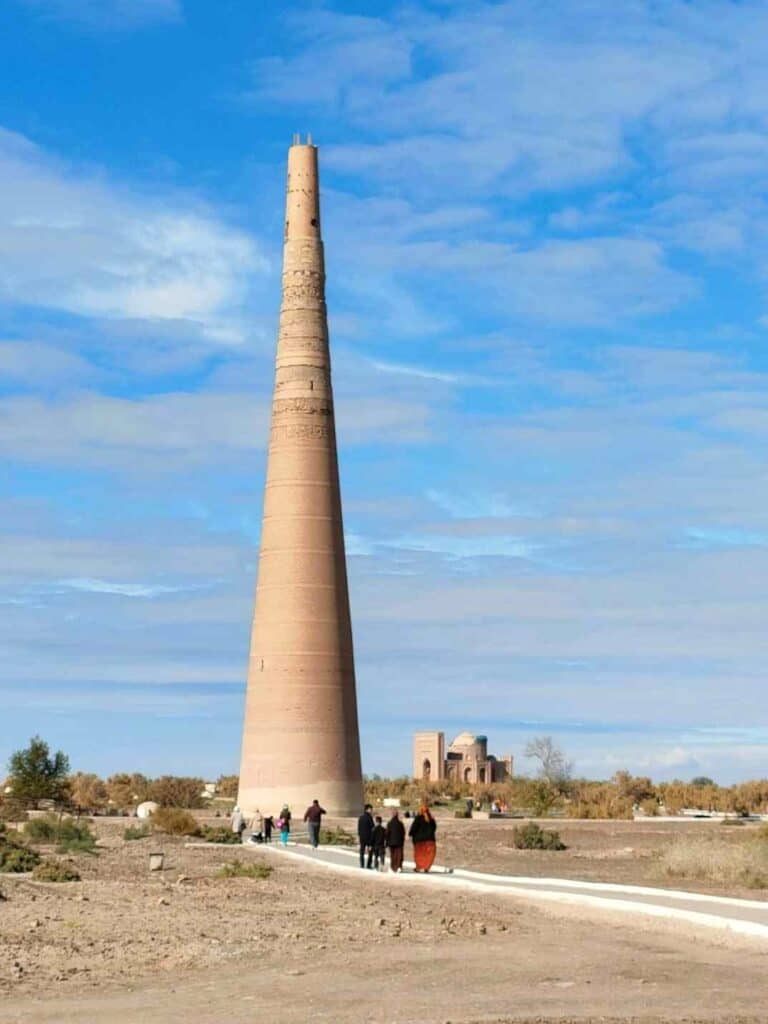
Dinosaur Plateau
The least known but most beautiful natural attraction of Turkmenistan is located in the far eastern corner of the country, for which, starting from Ashgabat, you should add at least 2, but preferably 3 days. I haven’t been here personally either, but I’ll mention it so you know about it. If it sounds interesting, you can include it in the program.
In the Koytendag mountains, at an altitude of 1,500 meters, lies a large limestone slab, where 150 dinosaur footprints measuring 20-70 cm in size were discovered in 1980, so many cannot be found anywhere else in the world. The interesting thing about the plateau is that it slopes at 17-20 degrees and that human footprints have also been found in addition to dinosaur footprints, but there are still many mysteries about them.
Turkmenbashi
The Russians called the city with the smallest Turkmen population in the country Krasnovodsk (red water). In 1993, President Niyazov renamed it after himself, Turkmenbashi, and it remained unchanged during subsequent presidents. Turkmenbashi is the biggest port city and has the biggest oil refinery in the country.
Awaza, the Caspian Sea Resort – not open for tourists (2024)
Close to Turkmenbashi is the most popular Turkmen sea resort, Awaza.
It is a sort of Dubai with hotels, skyscrapers, and multi-lane roads built to attract tourists—however, those Turkmen who can afford to prefer going to the Turkish beaches. To make Awaza more attractive, they are planning two artificial islands like Dubai and to make Awaza visa-free for certain nationalities. Everything is concrete and marble. Unfortunately, it is temporarily closed to tourists.
Turkmenistan is one of the least visited destinations in Central Asia and the world. Today, it seems to be in the middle of nowhere, but in the past, when trade flourished along the Silk Road, it was the center of the world. Those who travel there can expect long journeys through the desert, but in addition to the modern capital packed with white marble buildings, you will see a canyon in different colors, a unique gas crater that has been burning for decades, the Akhal Teke horses, which are considered a national treasure, as well as archaeological monuments of once important cities (Merv, Nisa, Konya Urgench). However, the most lasting experience is to see how life is in one of the most unknown countries in the world.

